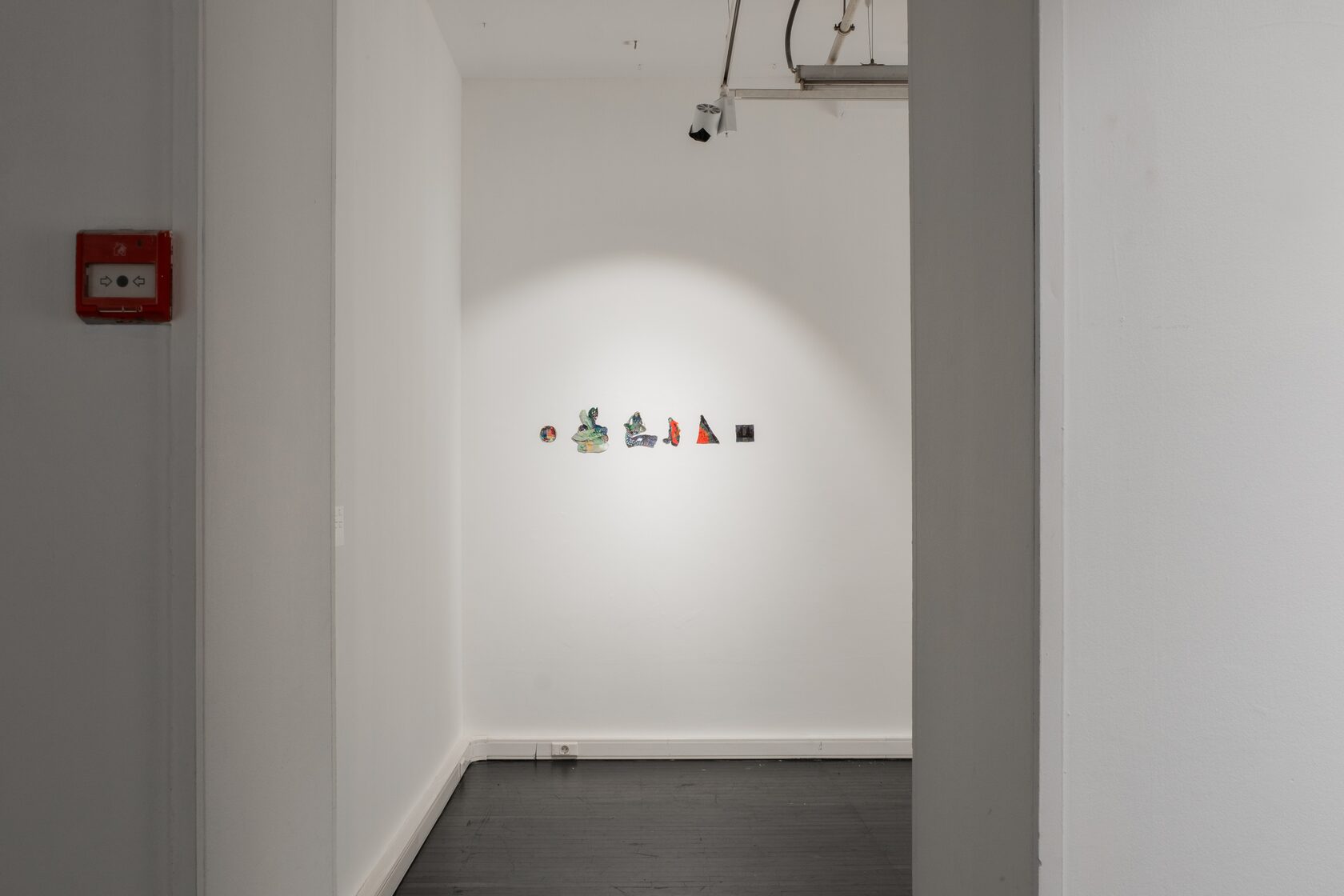
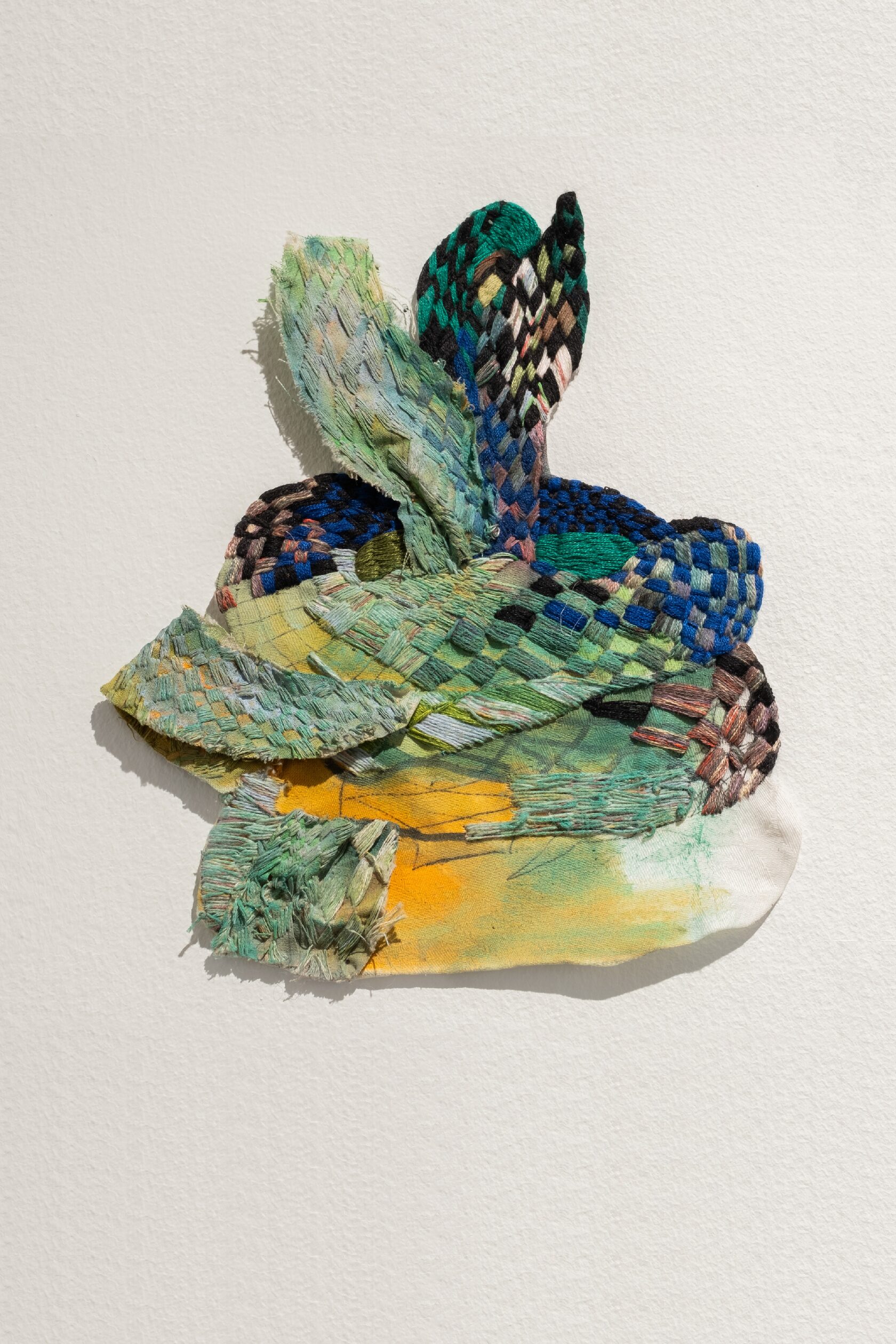
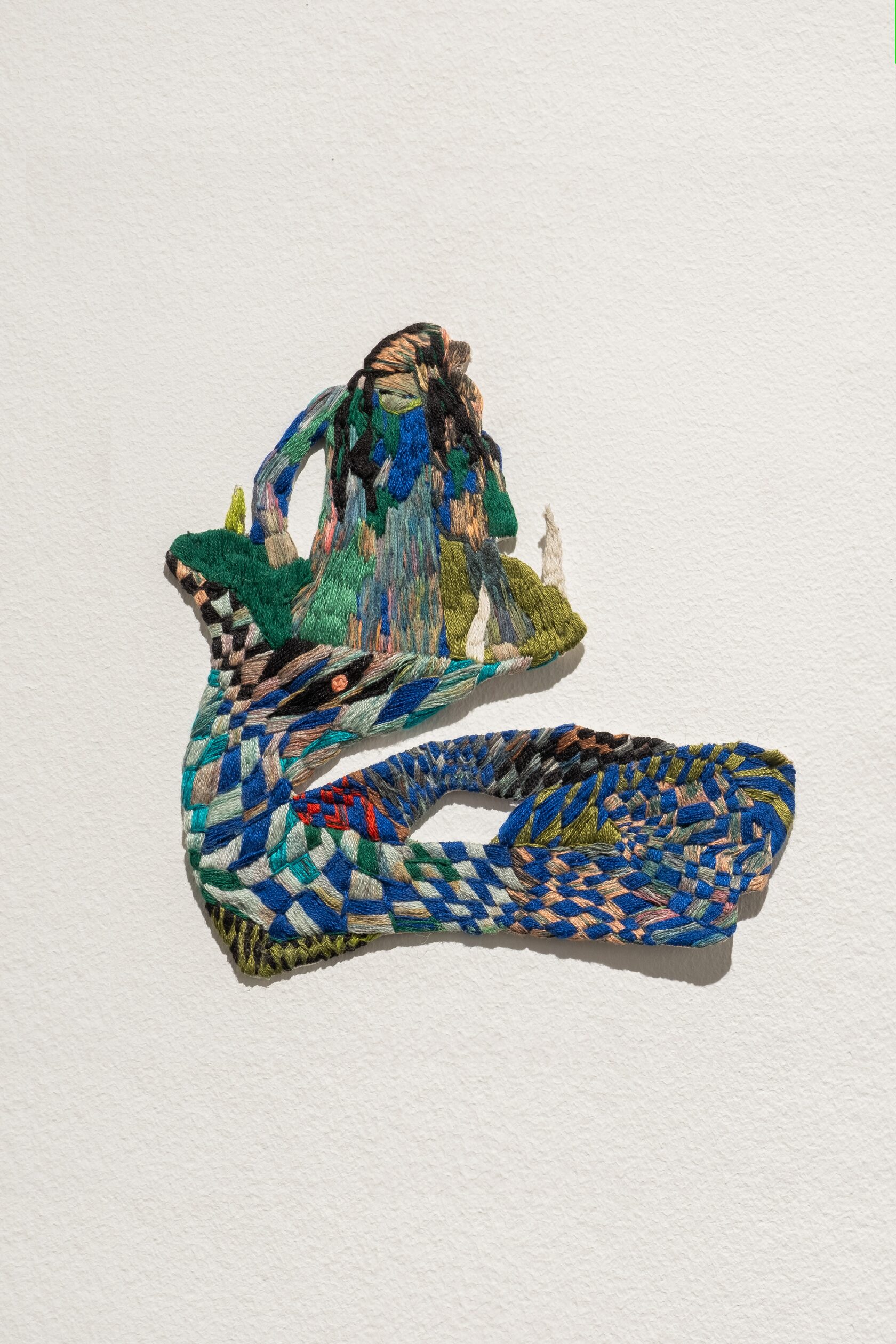

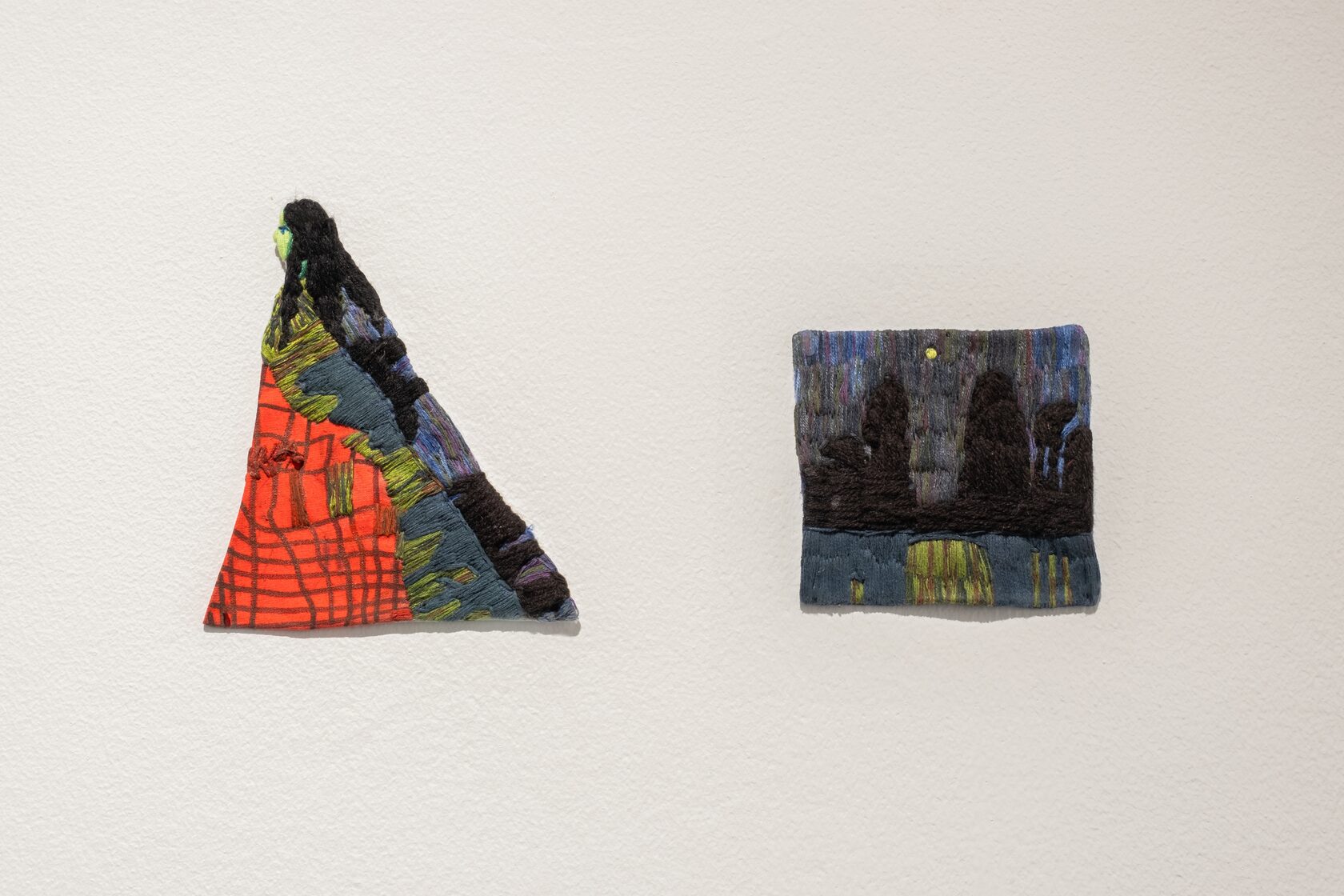
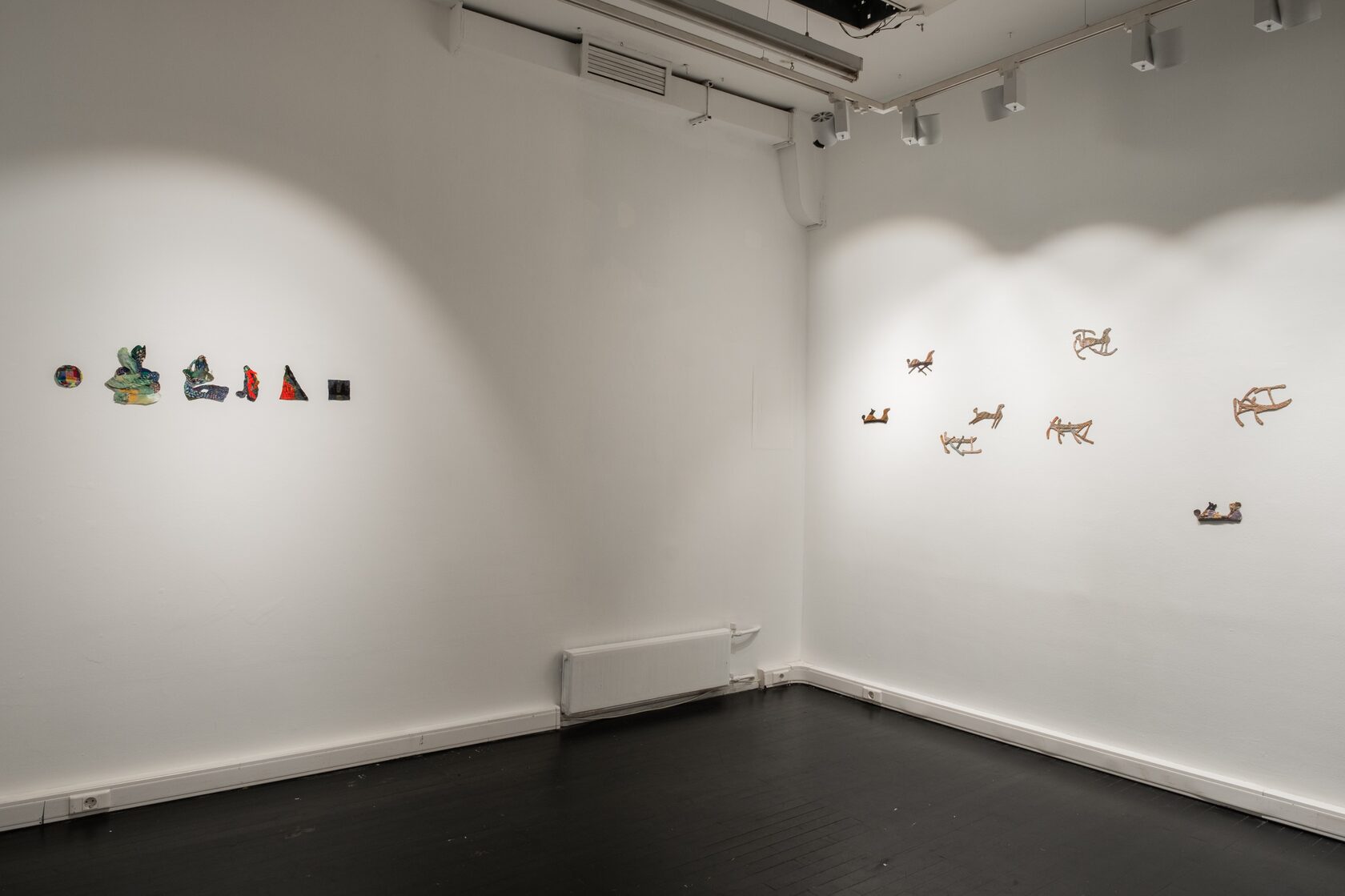
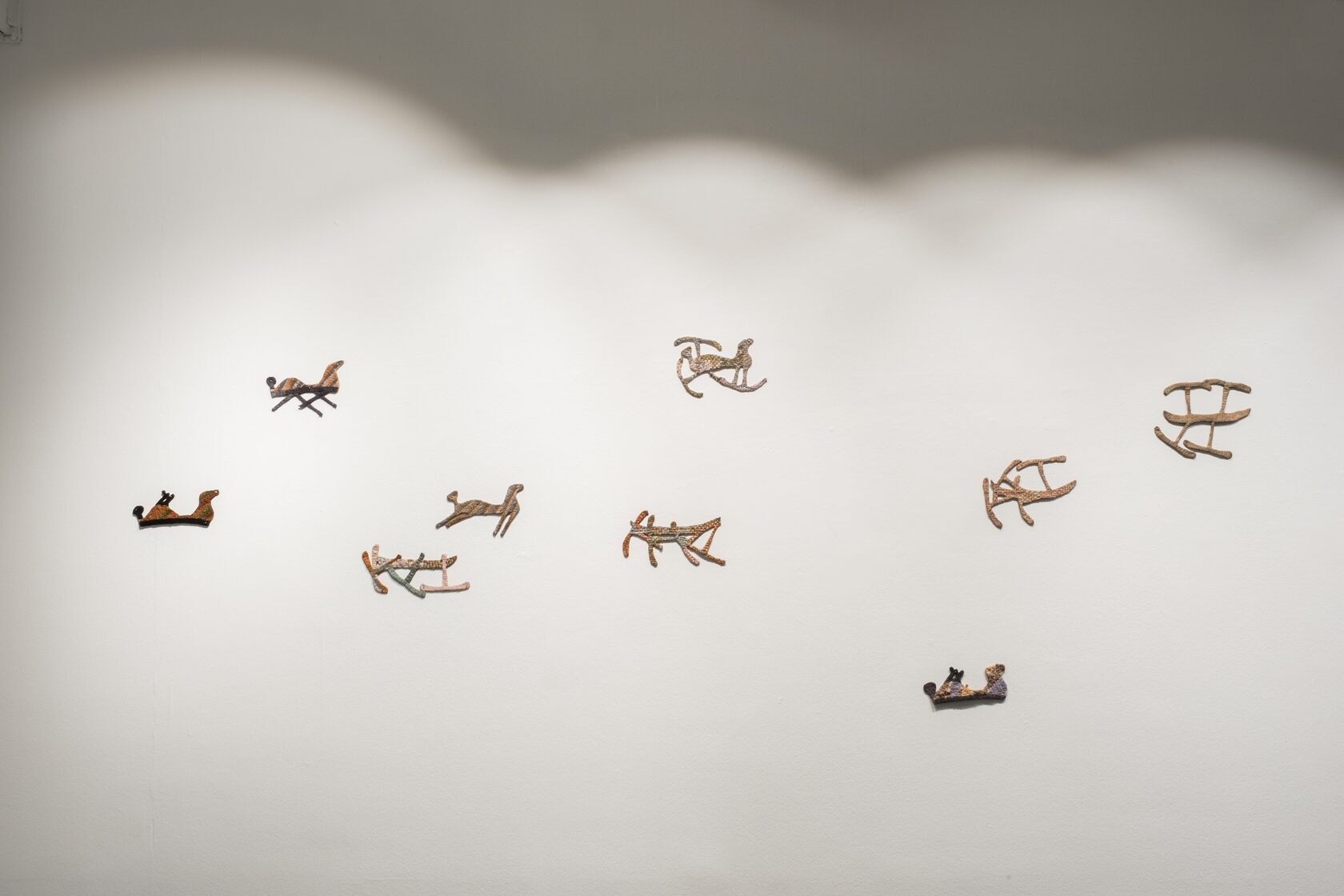

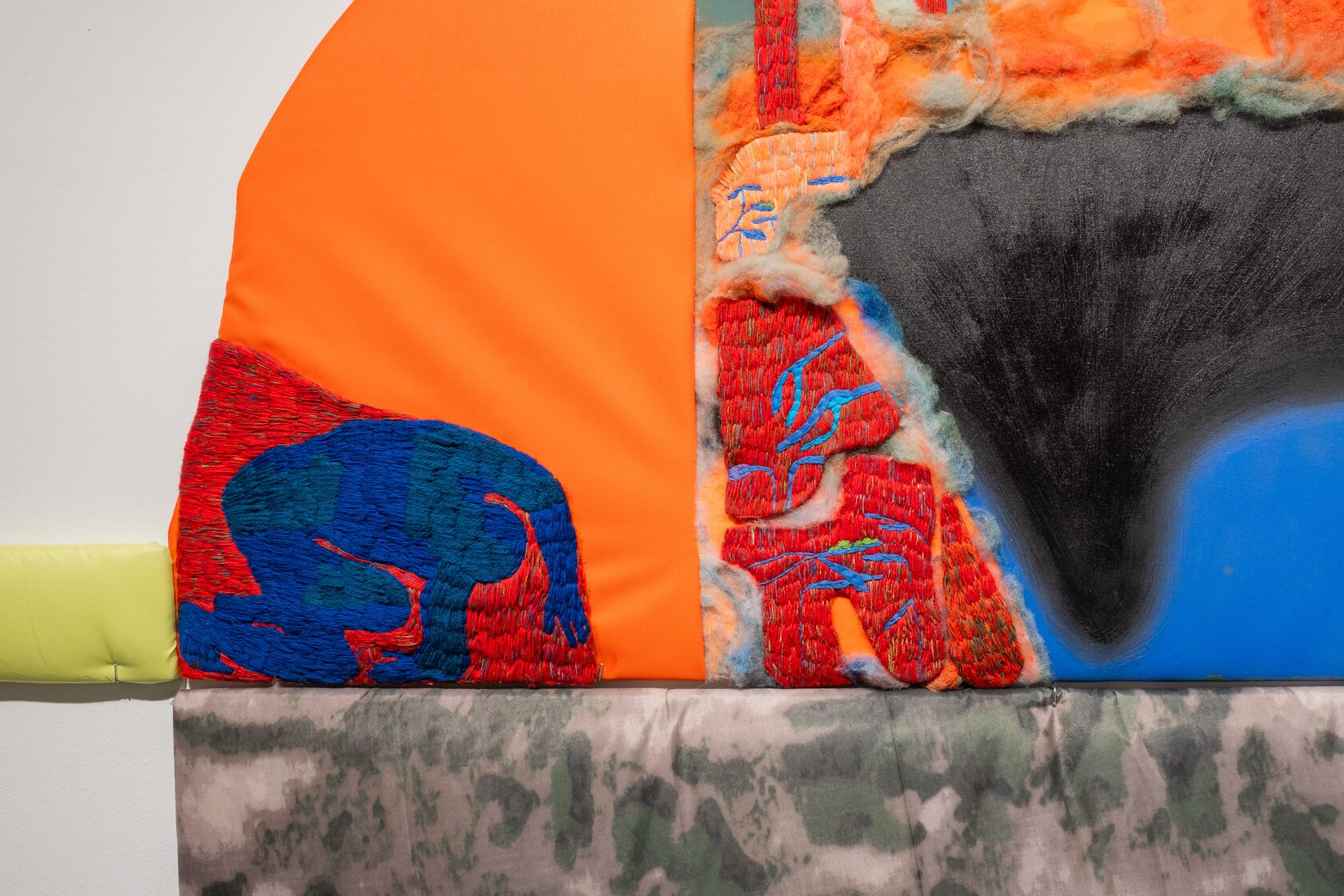
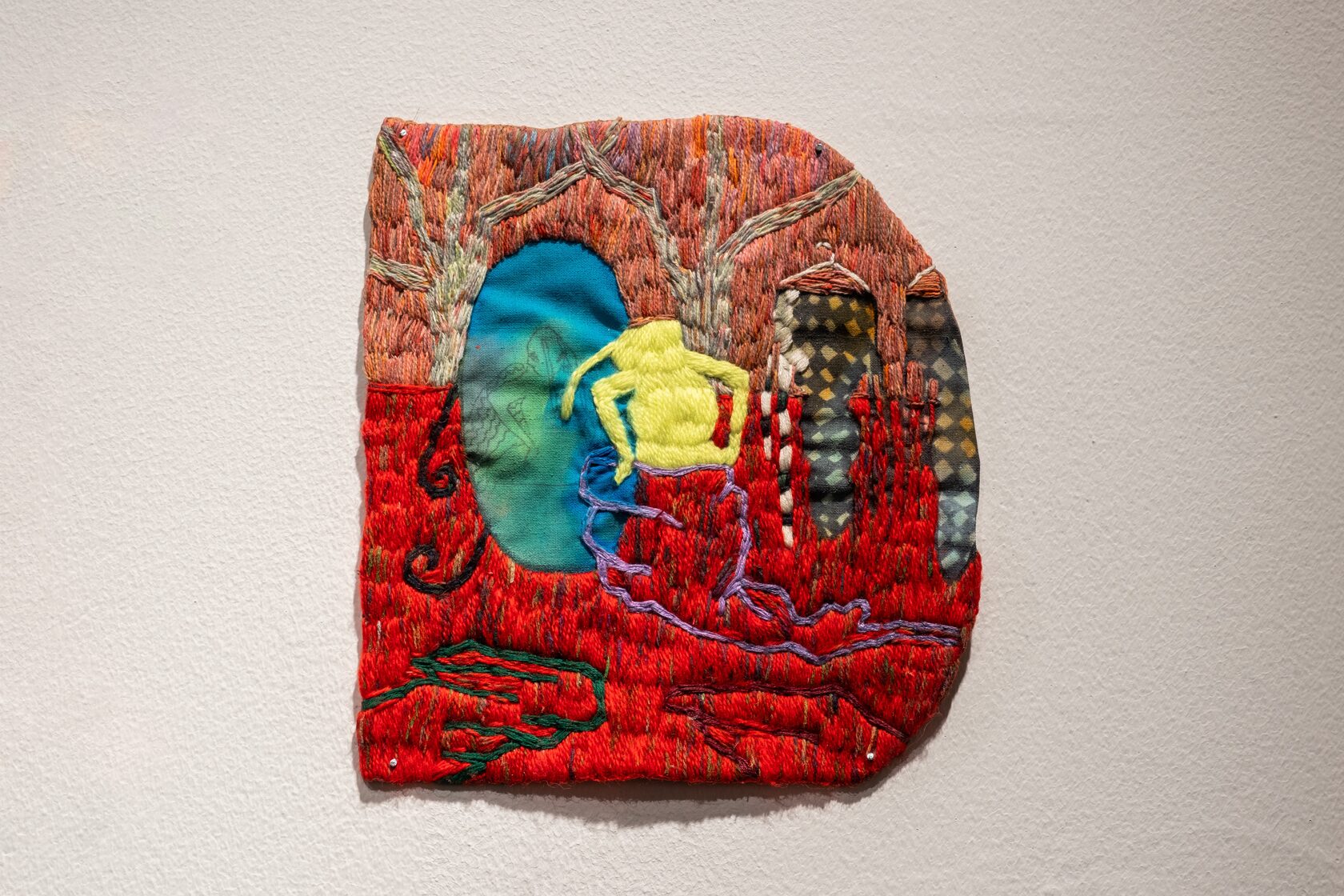
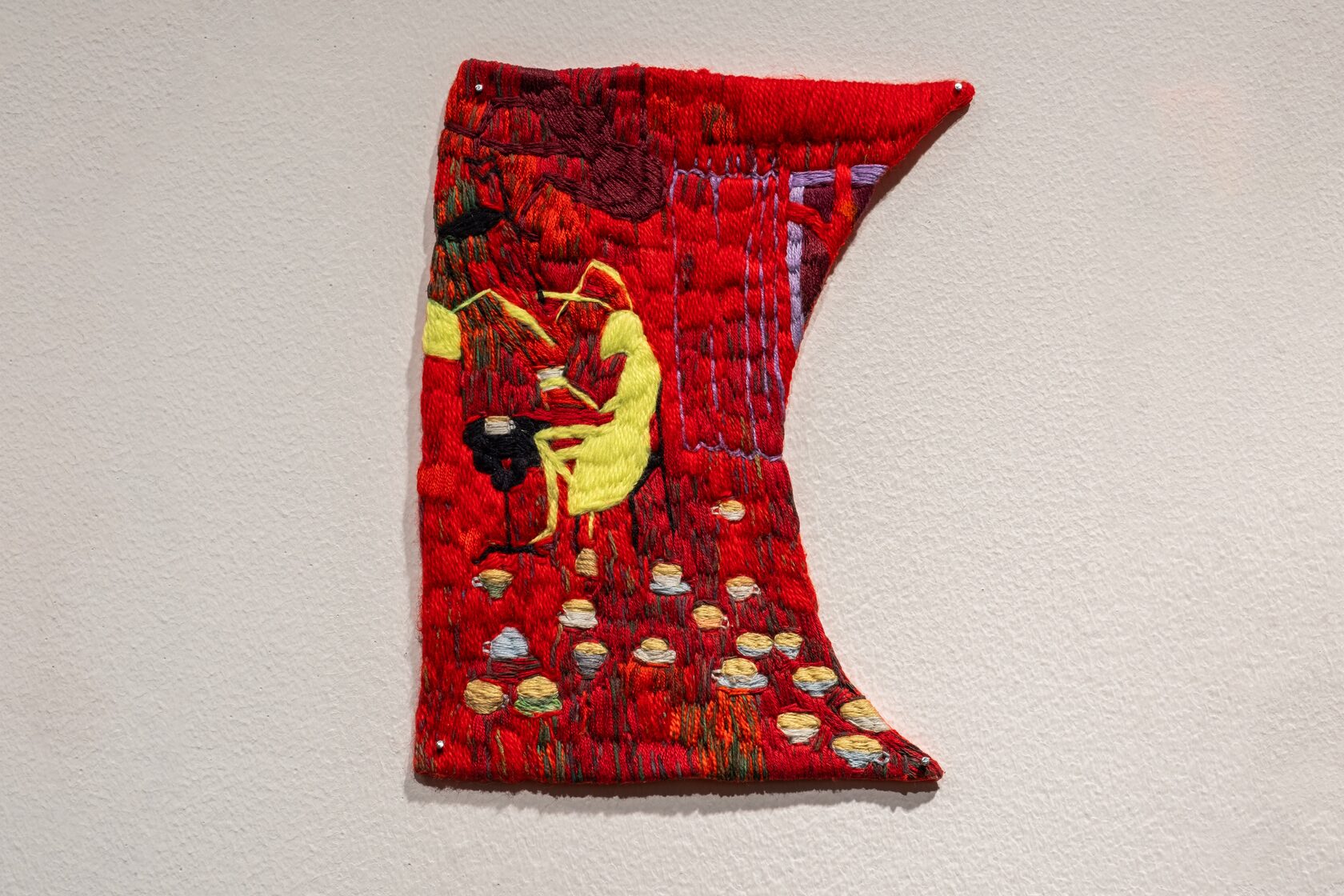
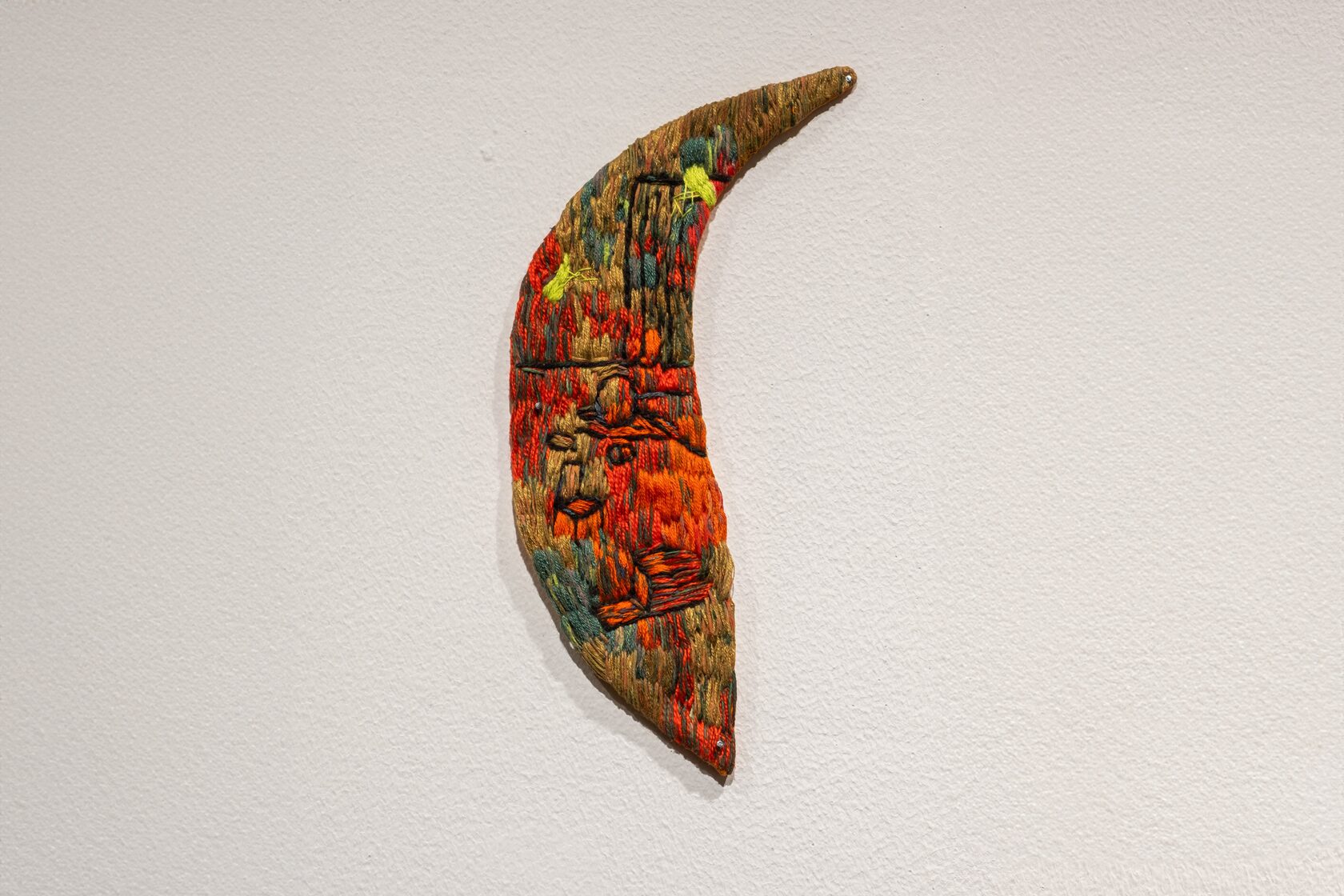
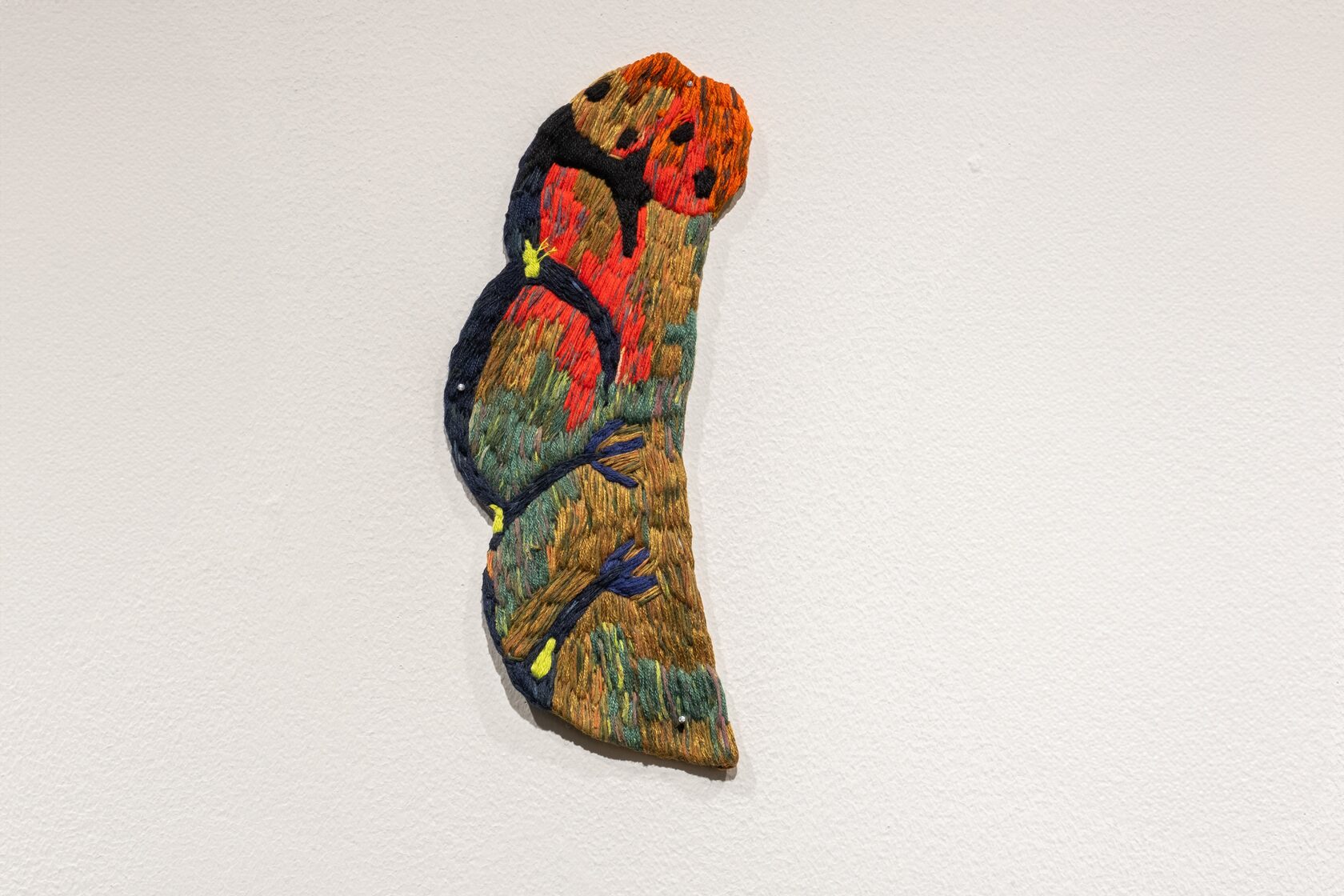
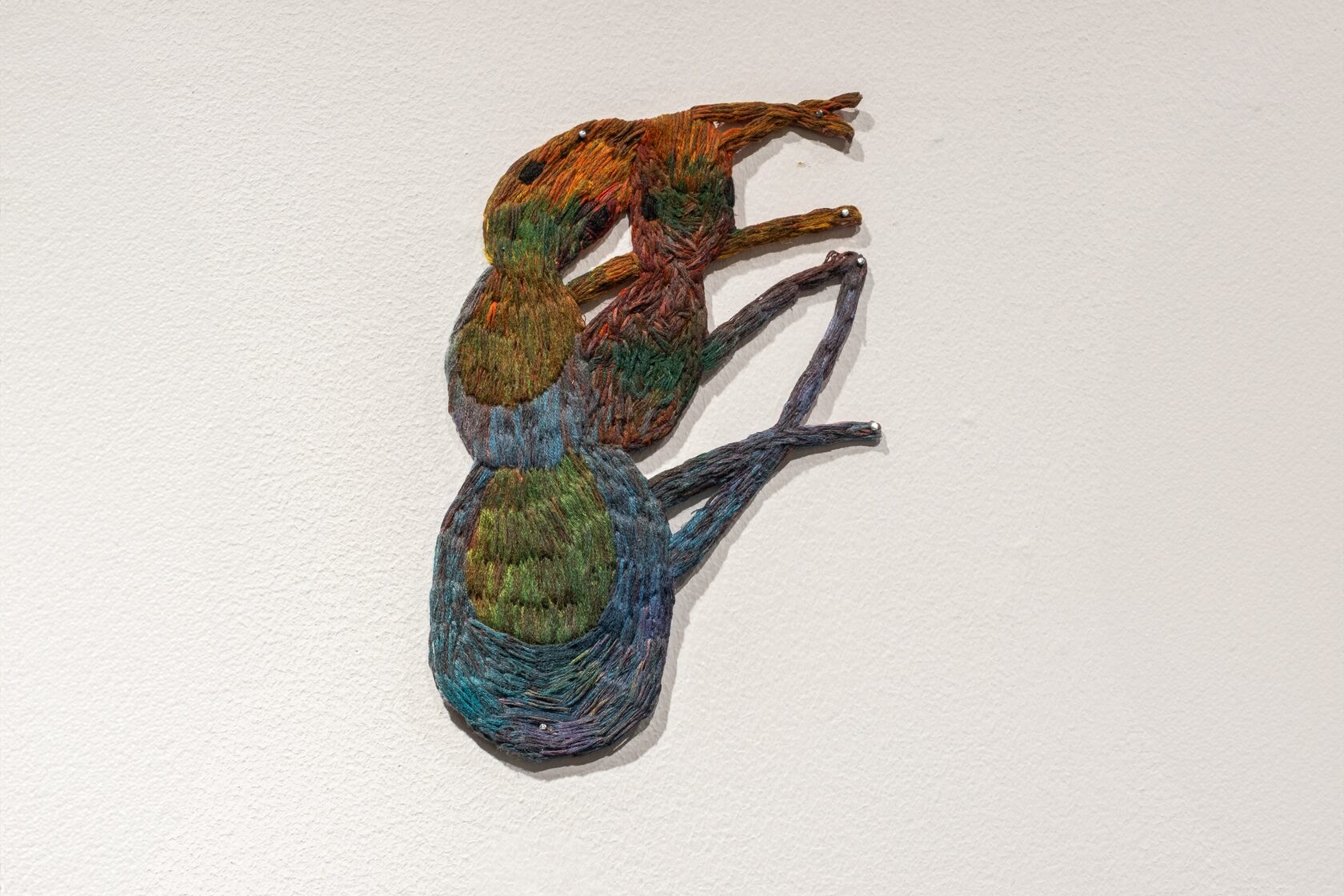

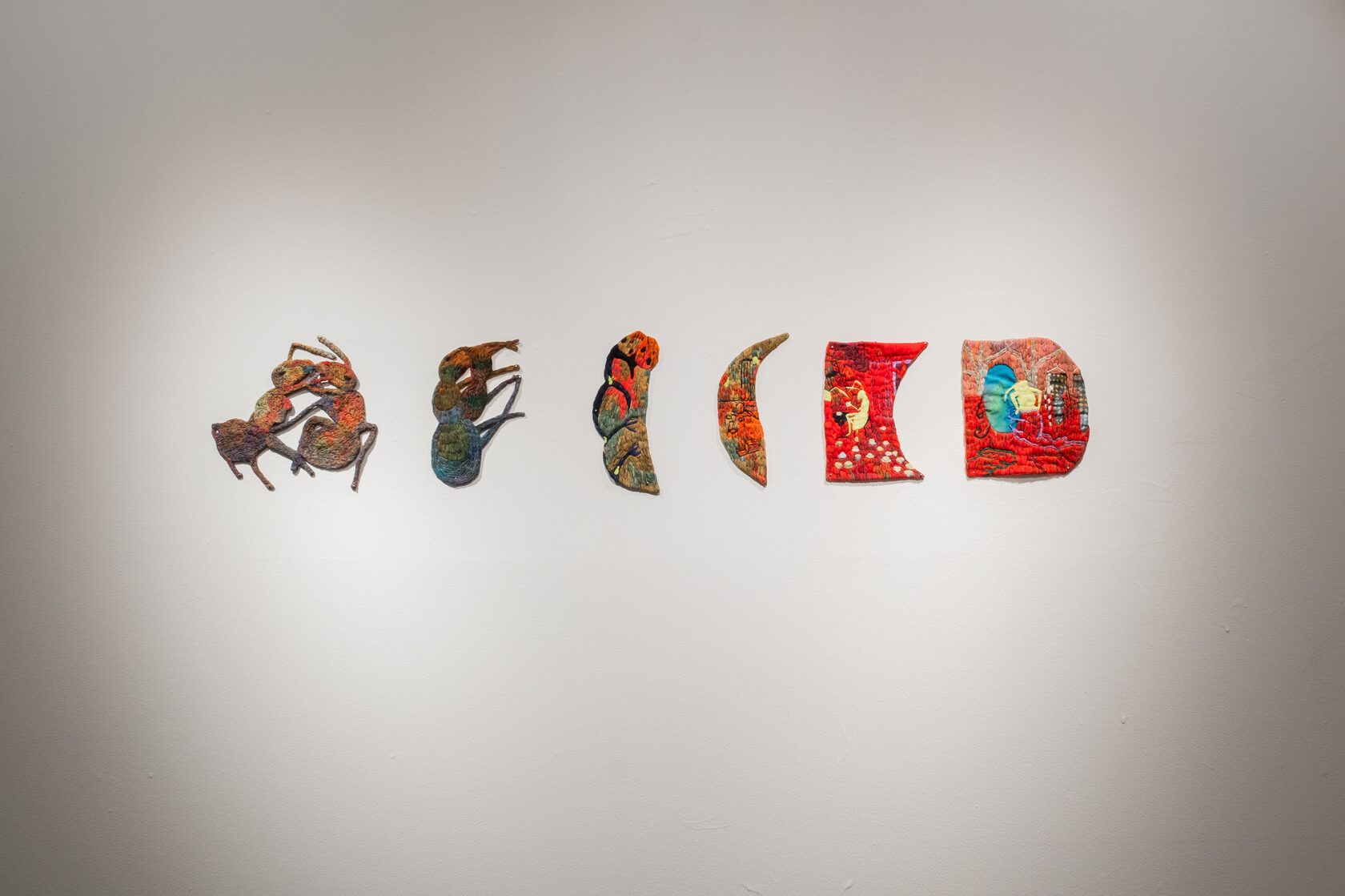
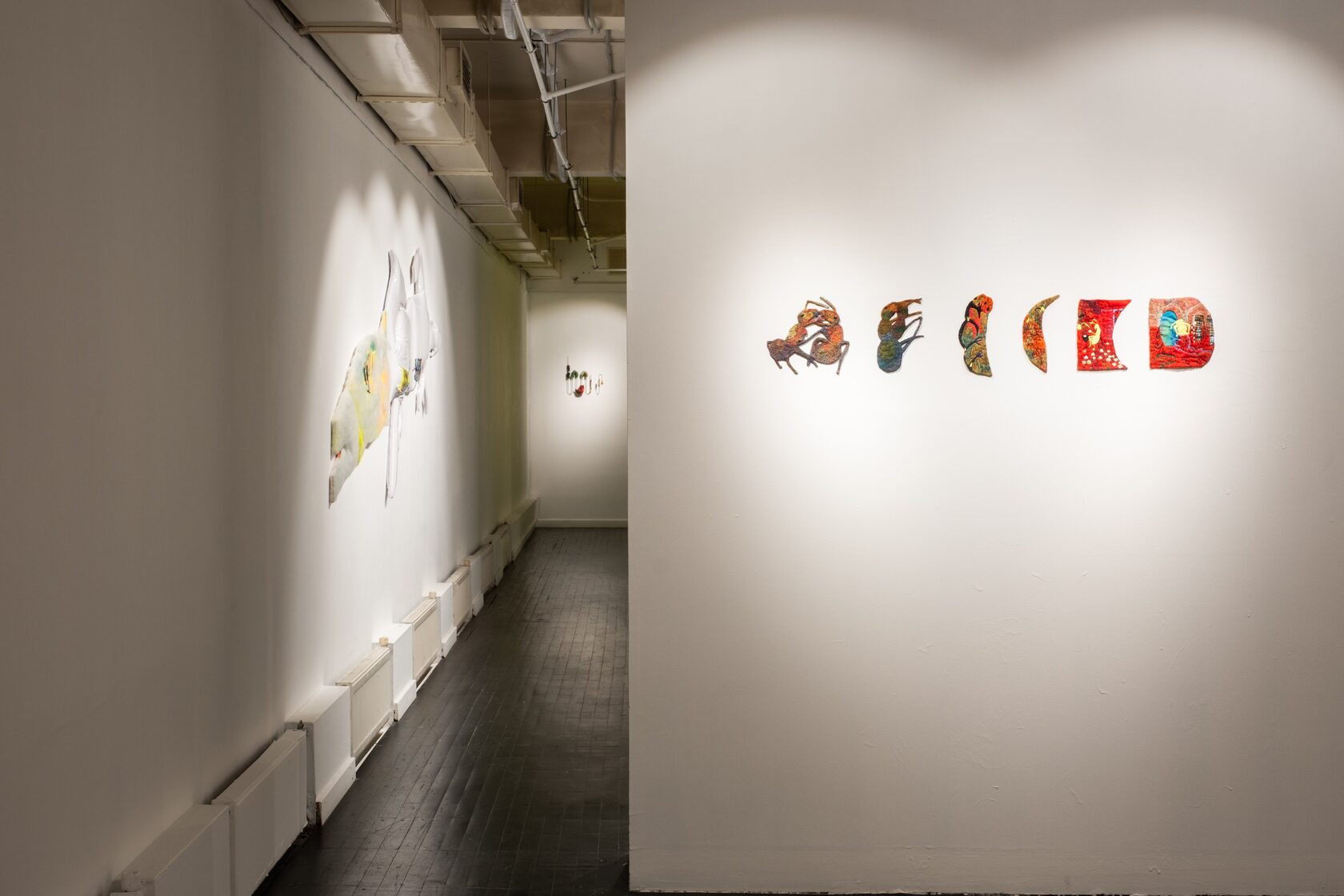
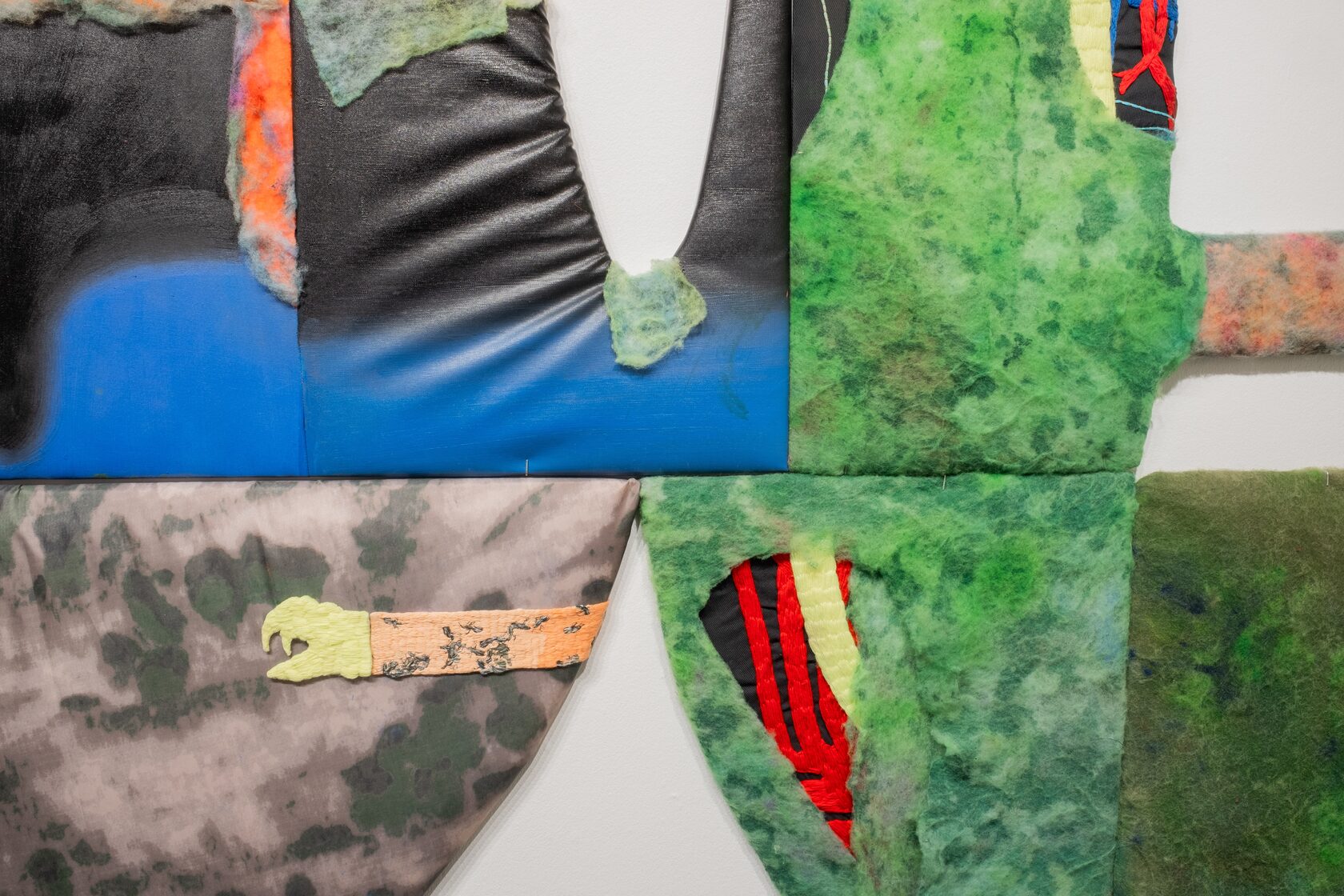
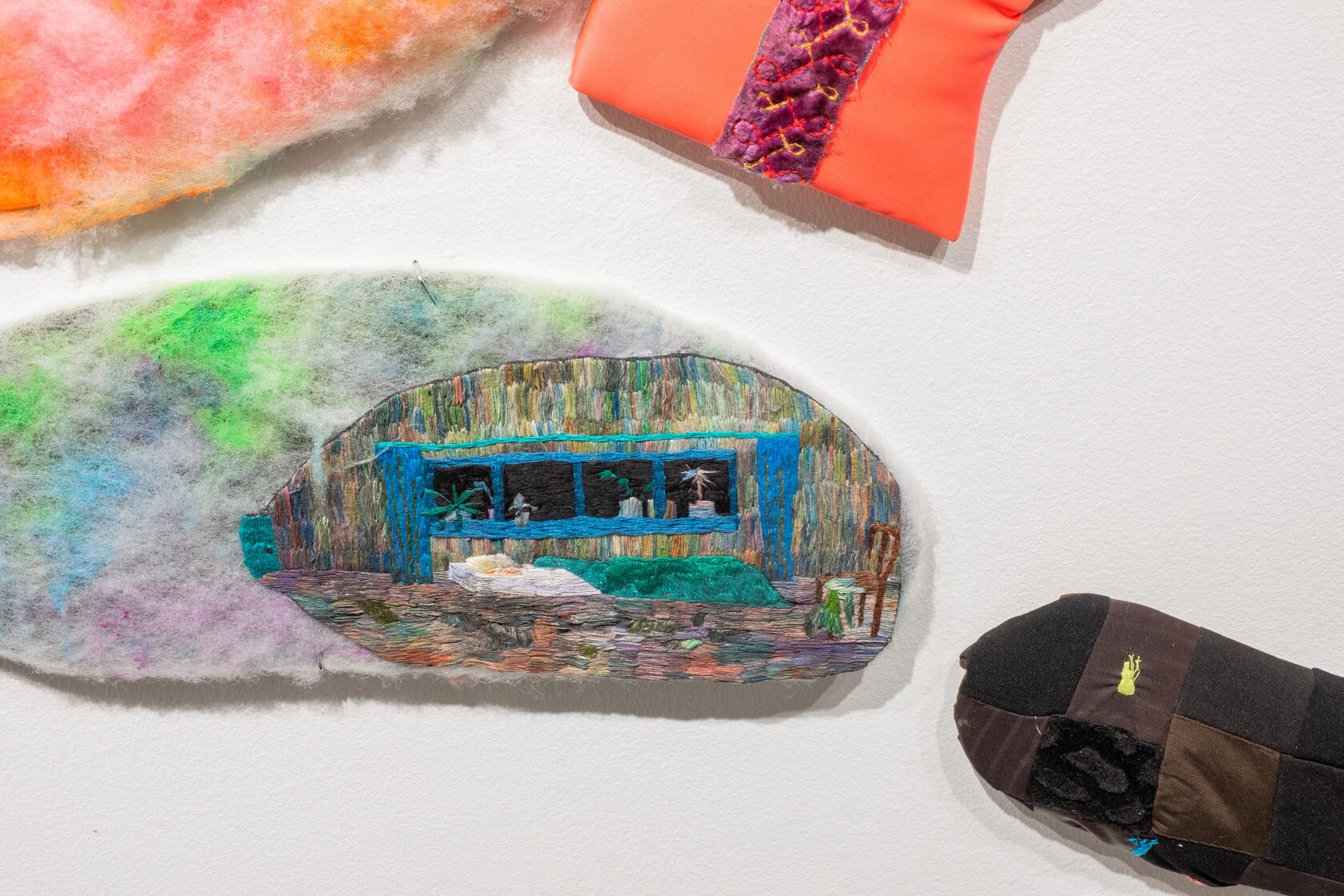
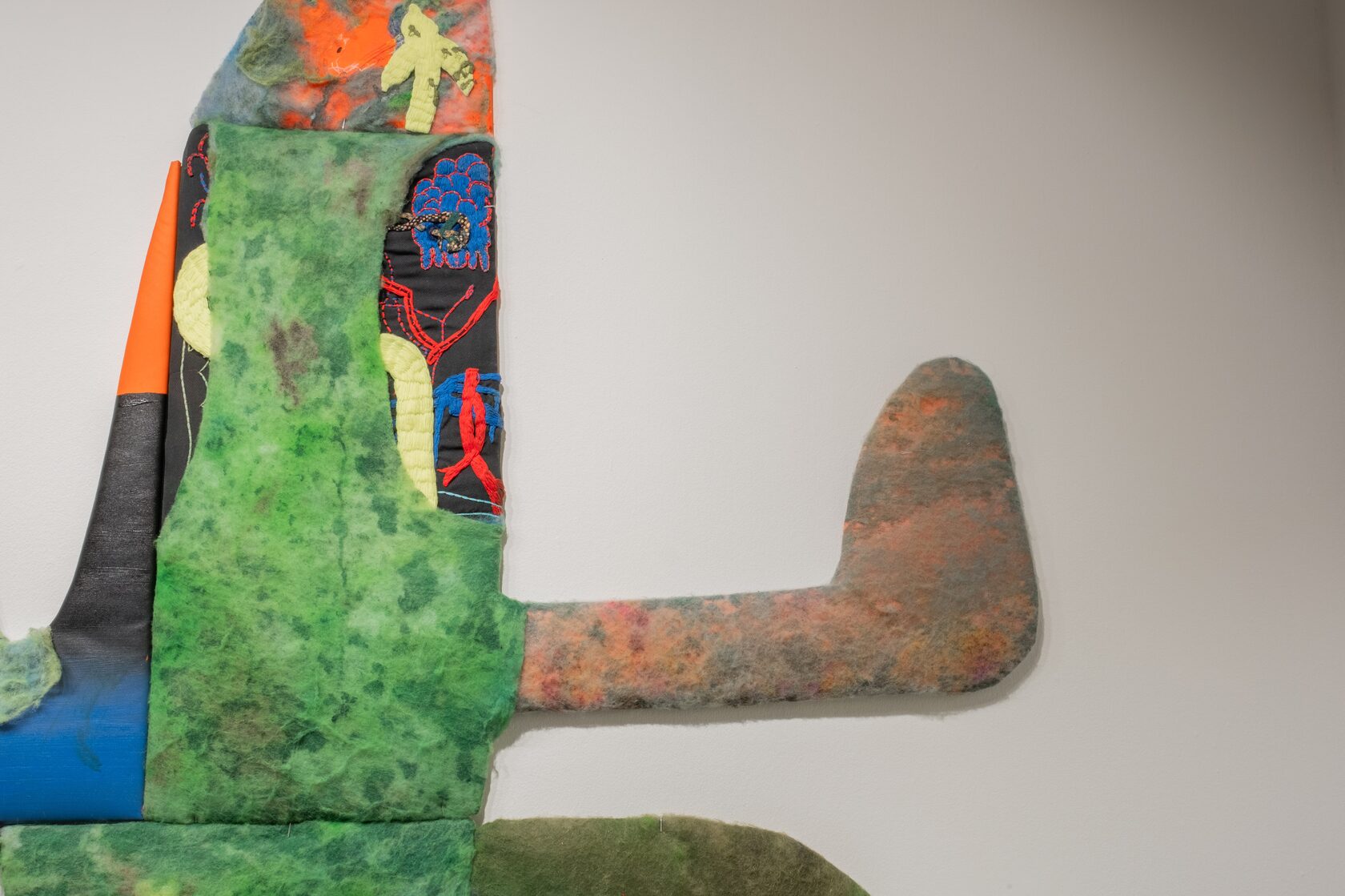
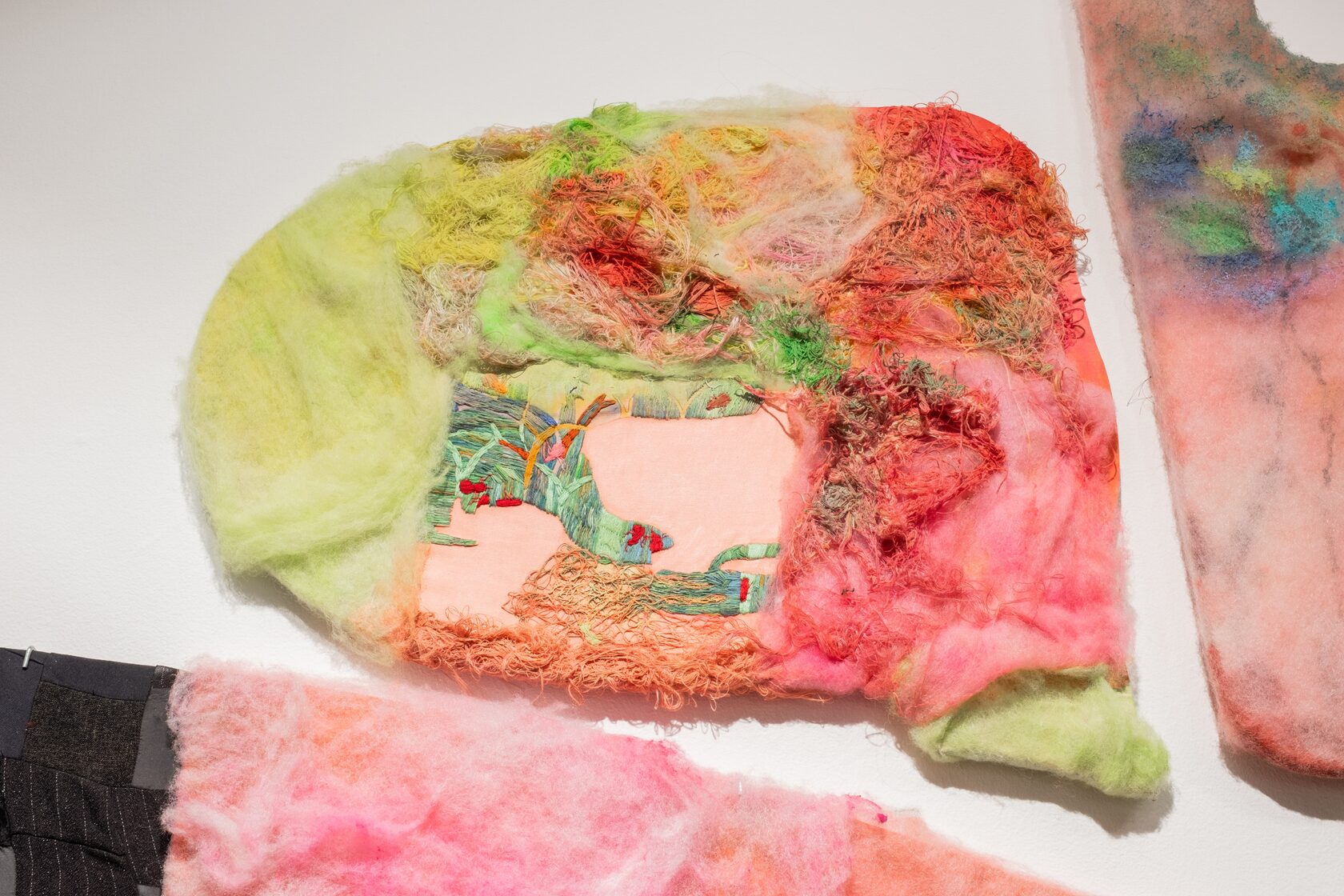
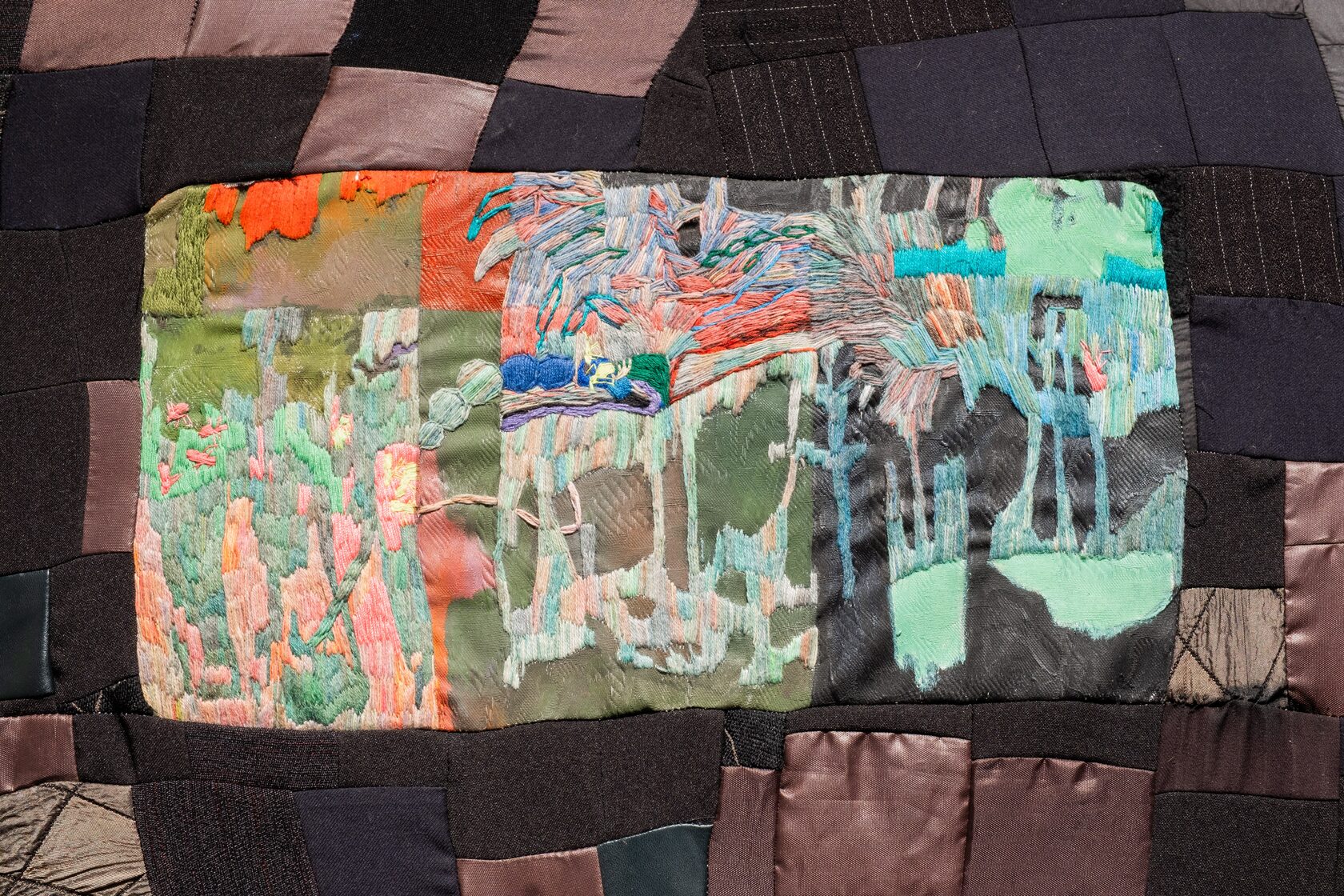
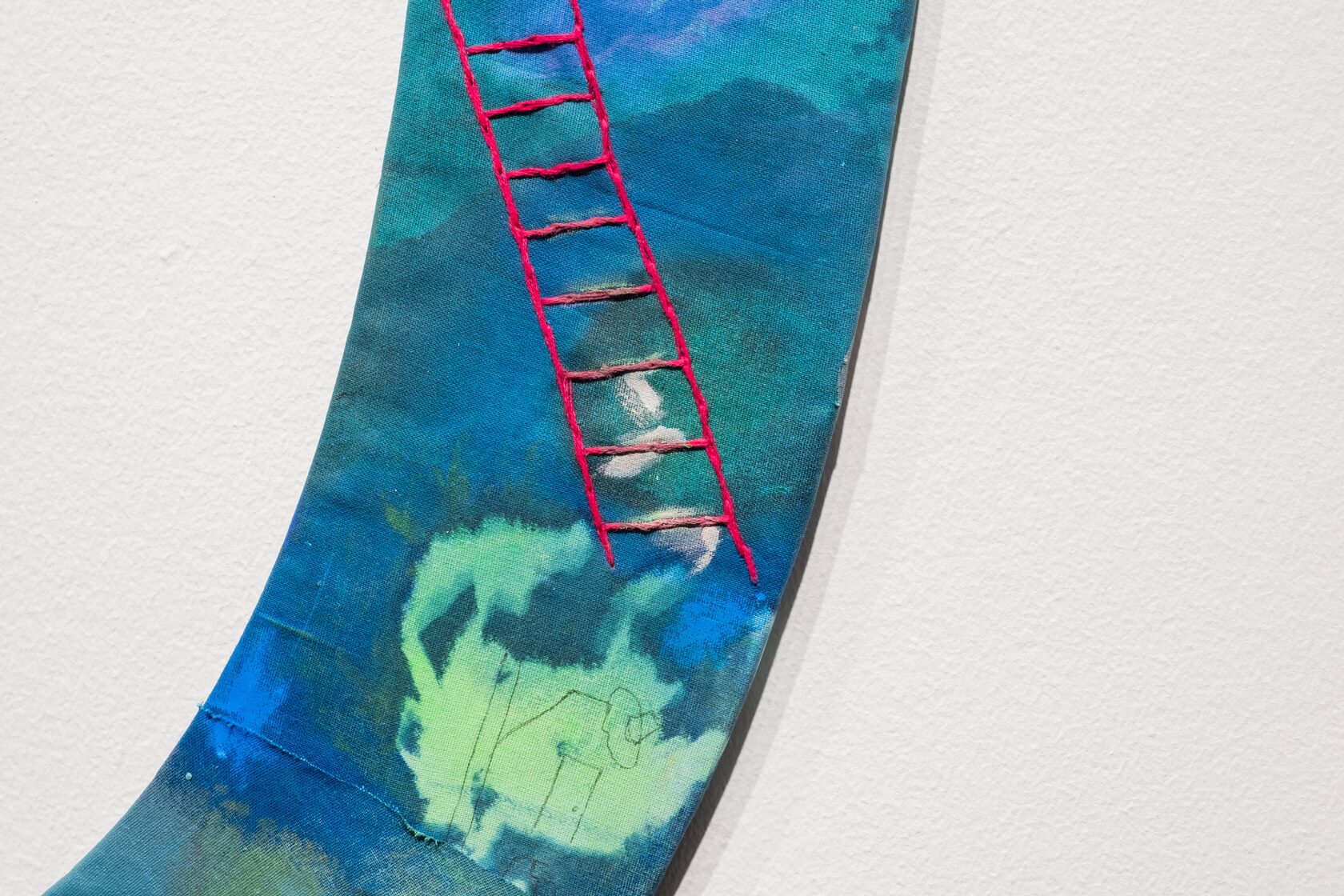
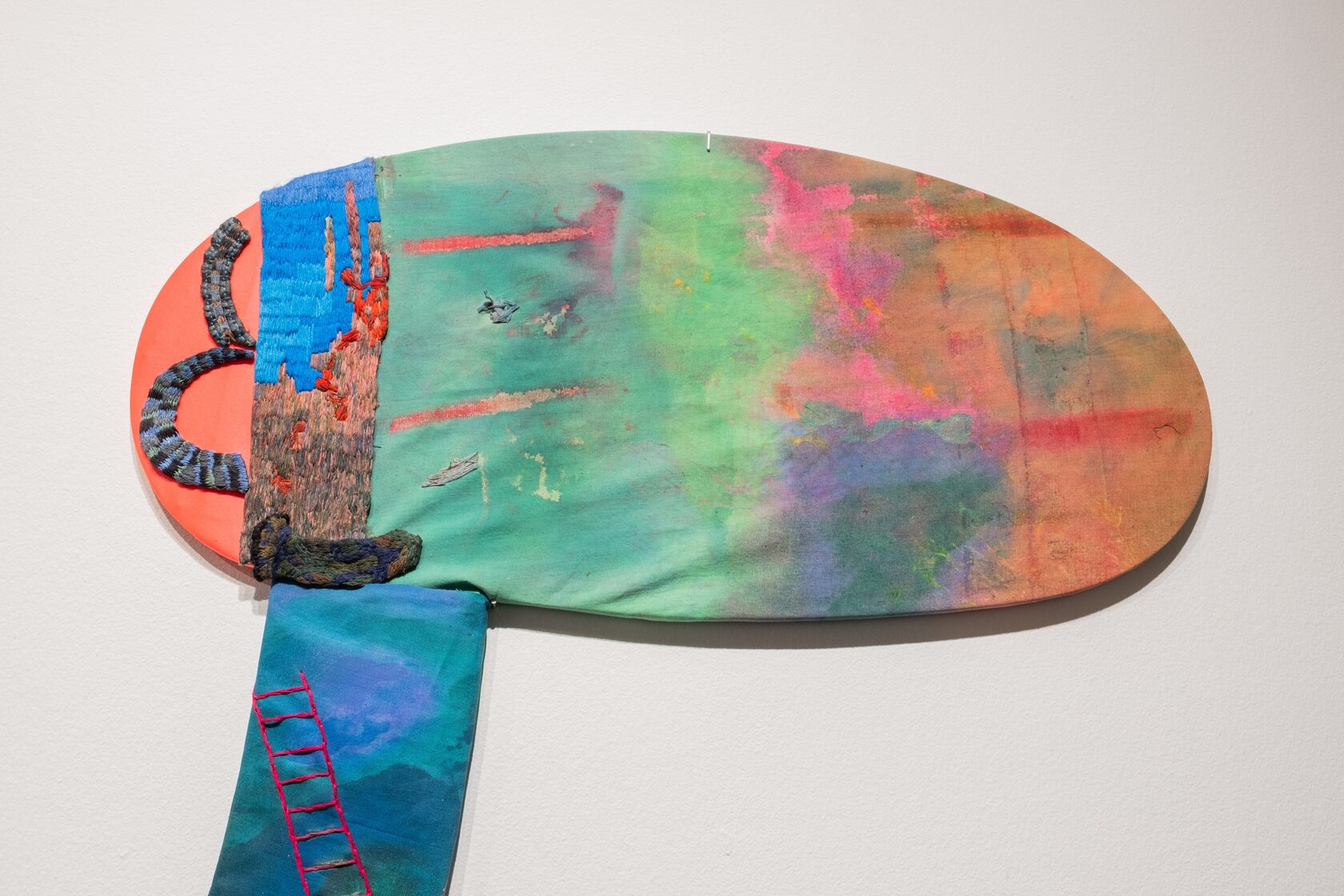
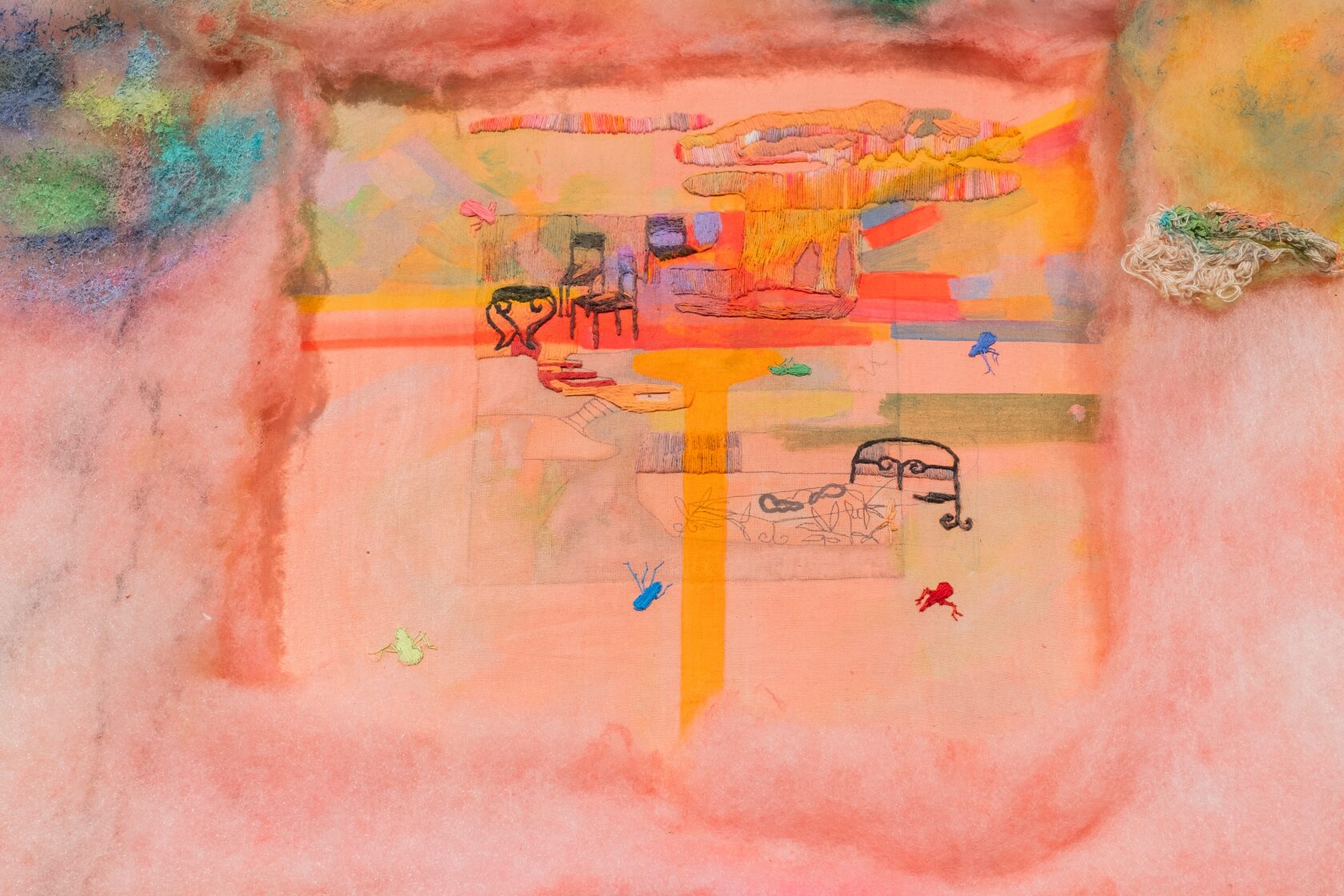
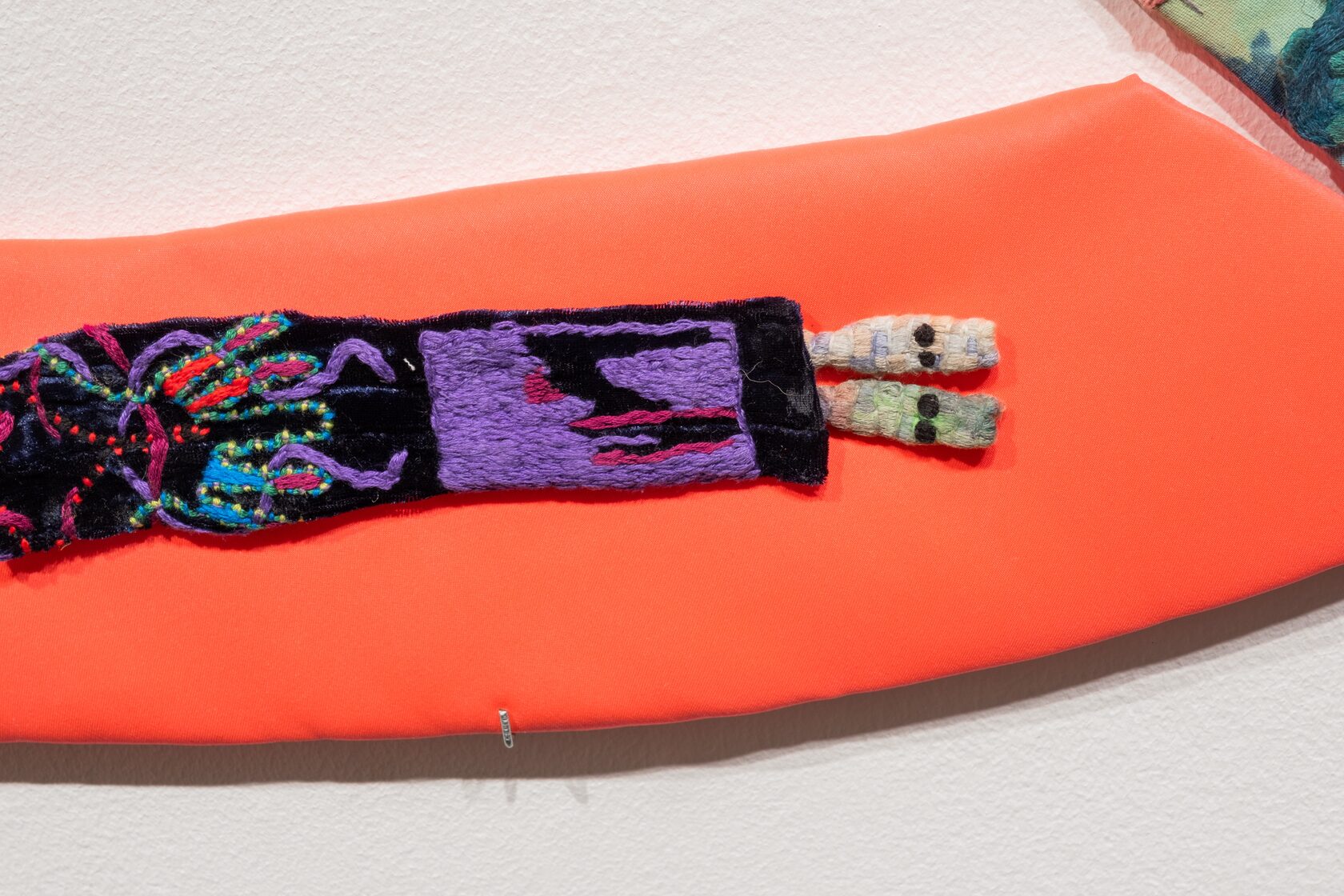

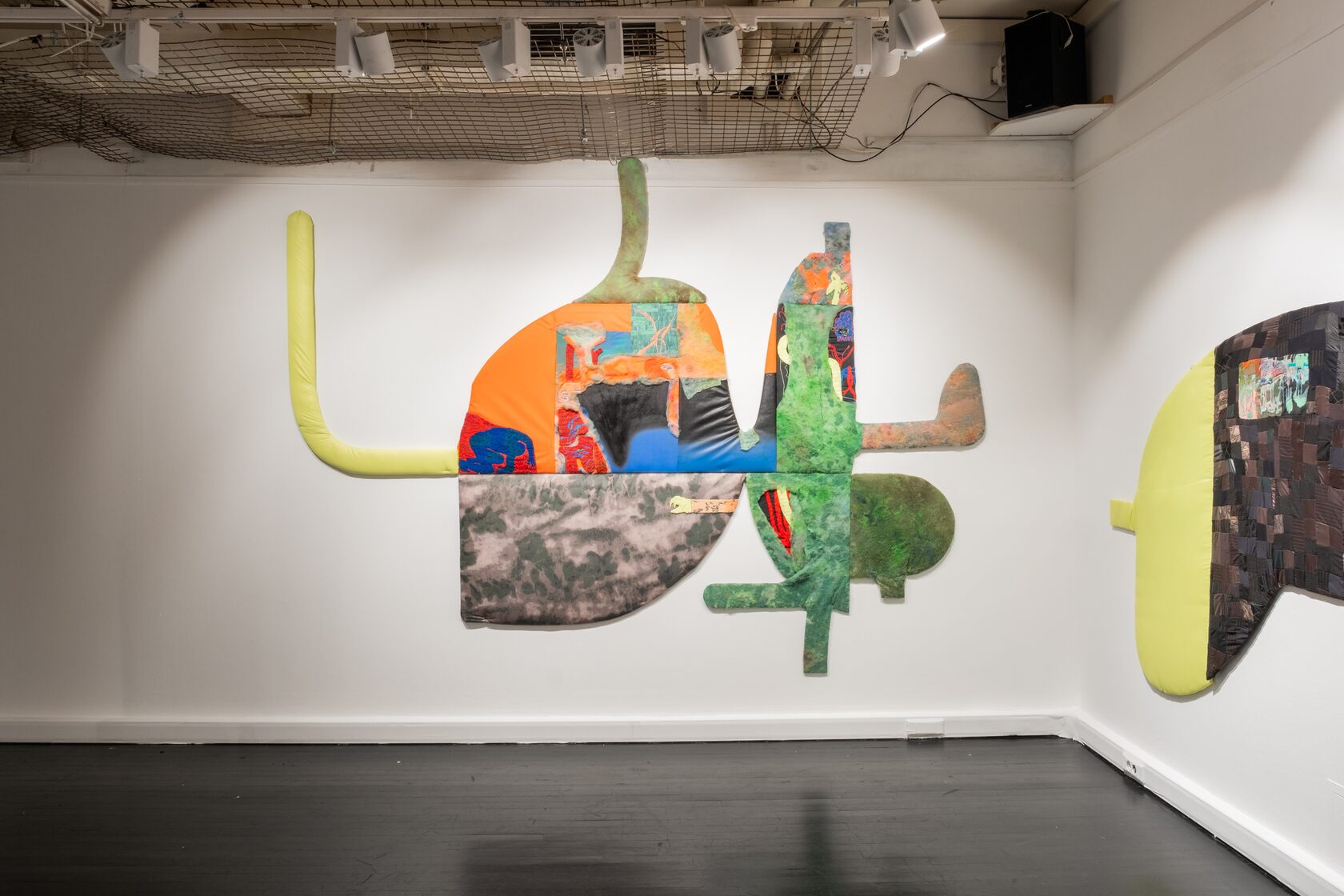
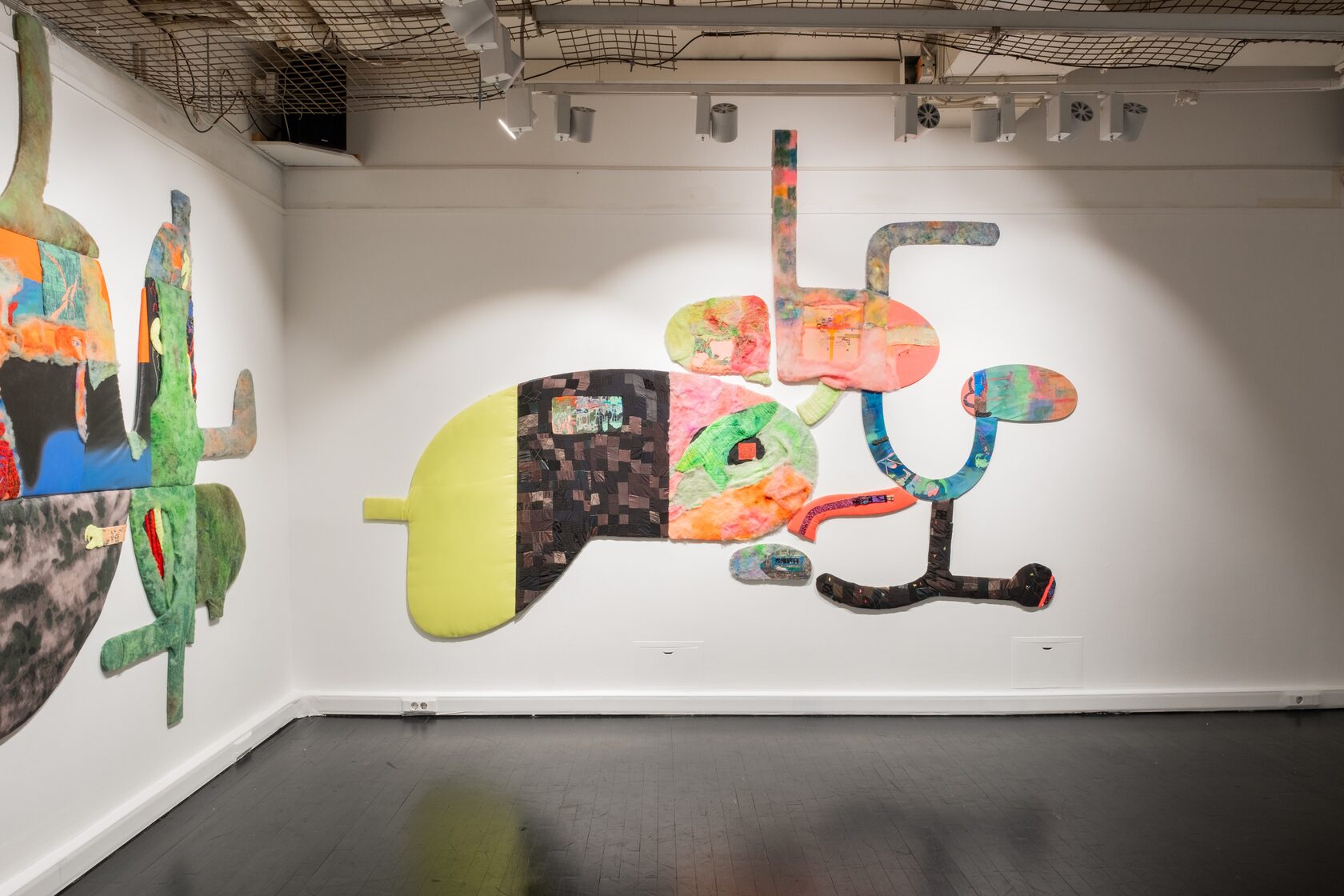

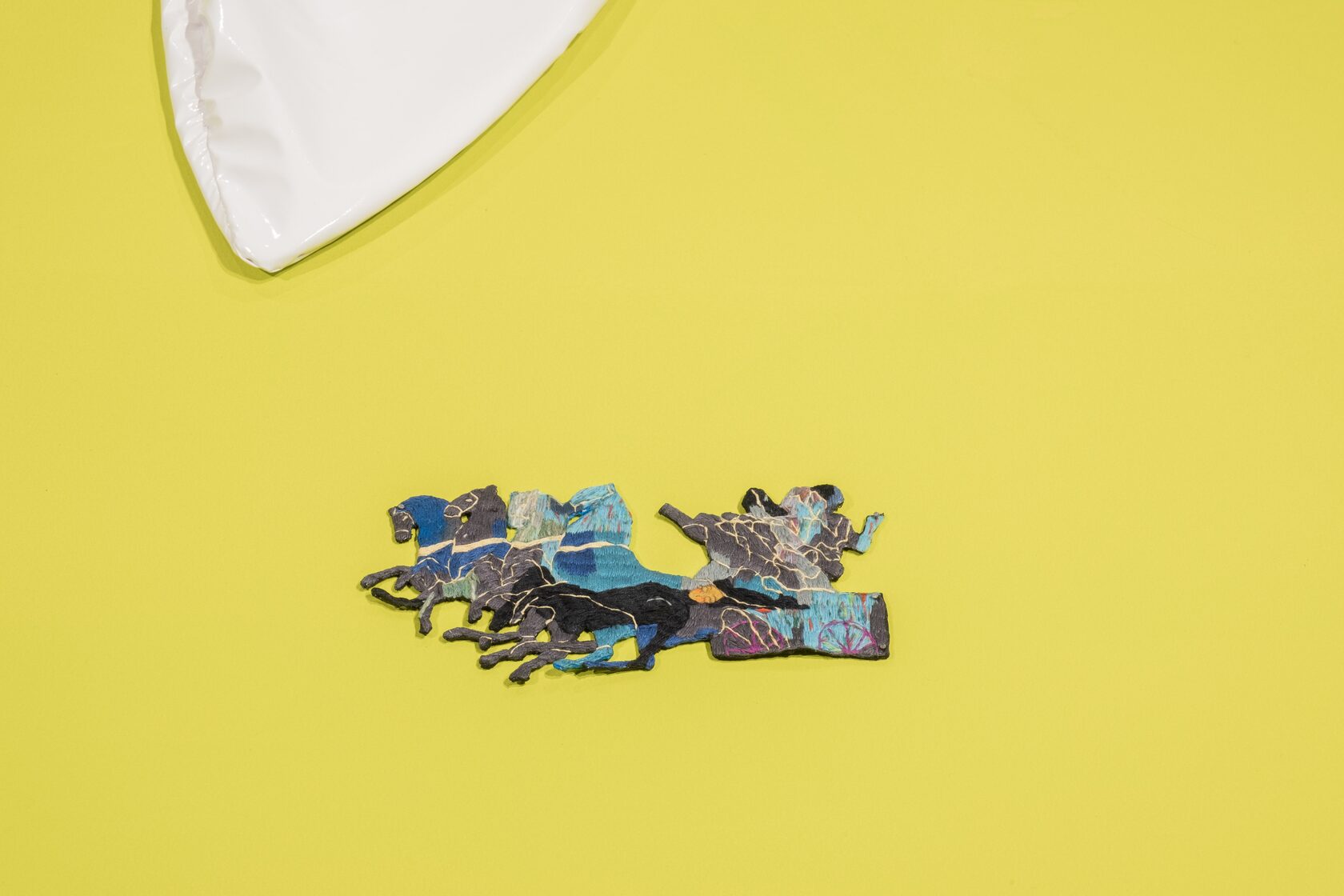

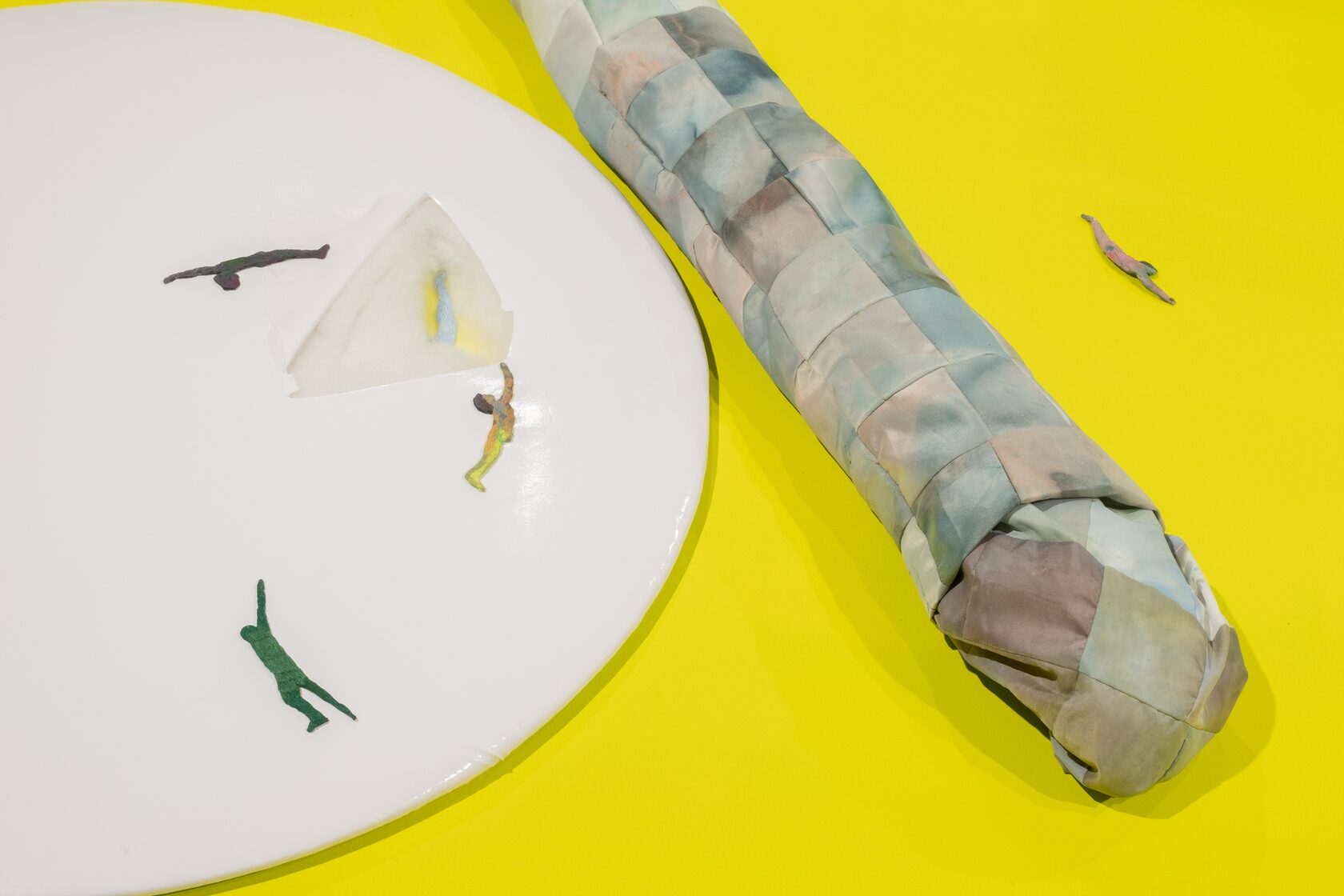
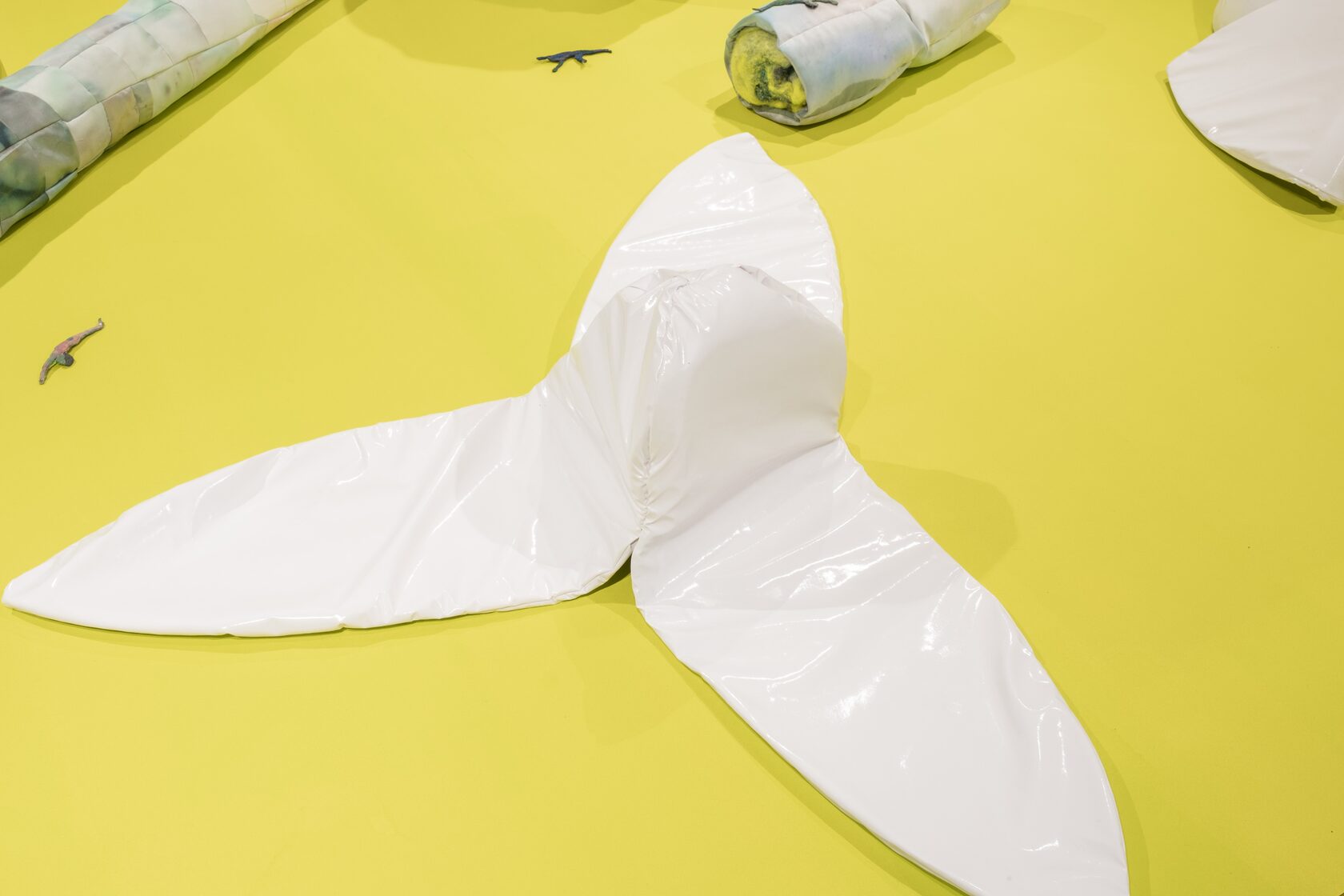
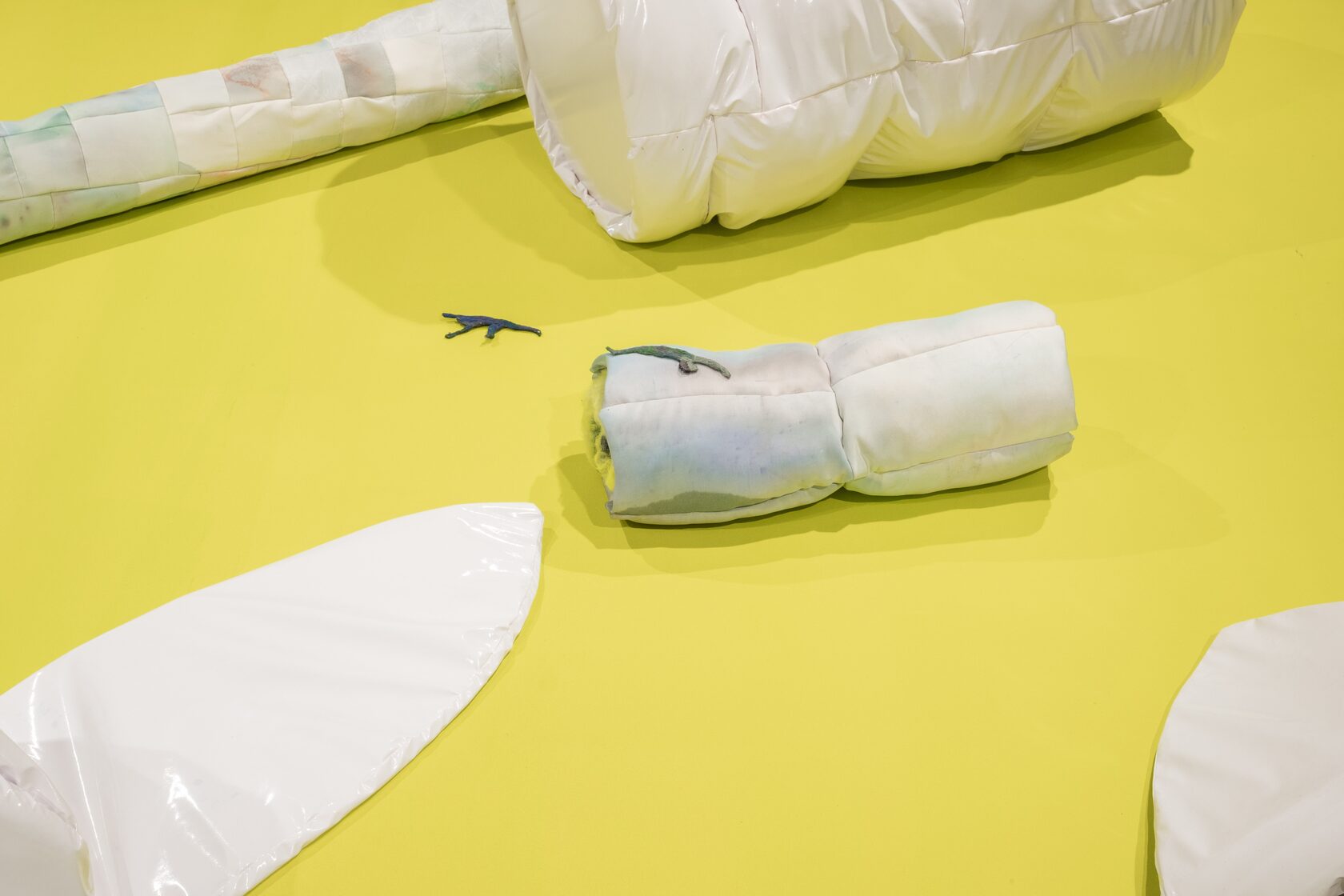
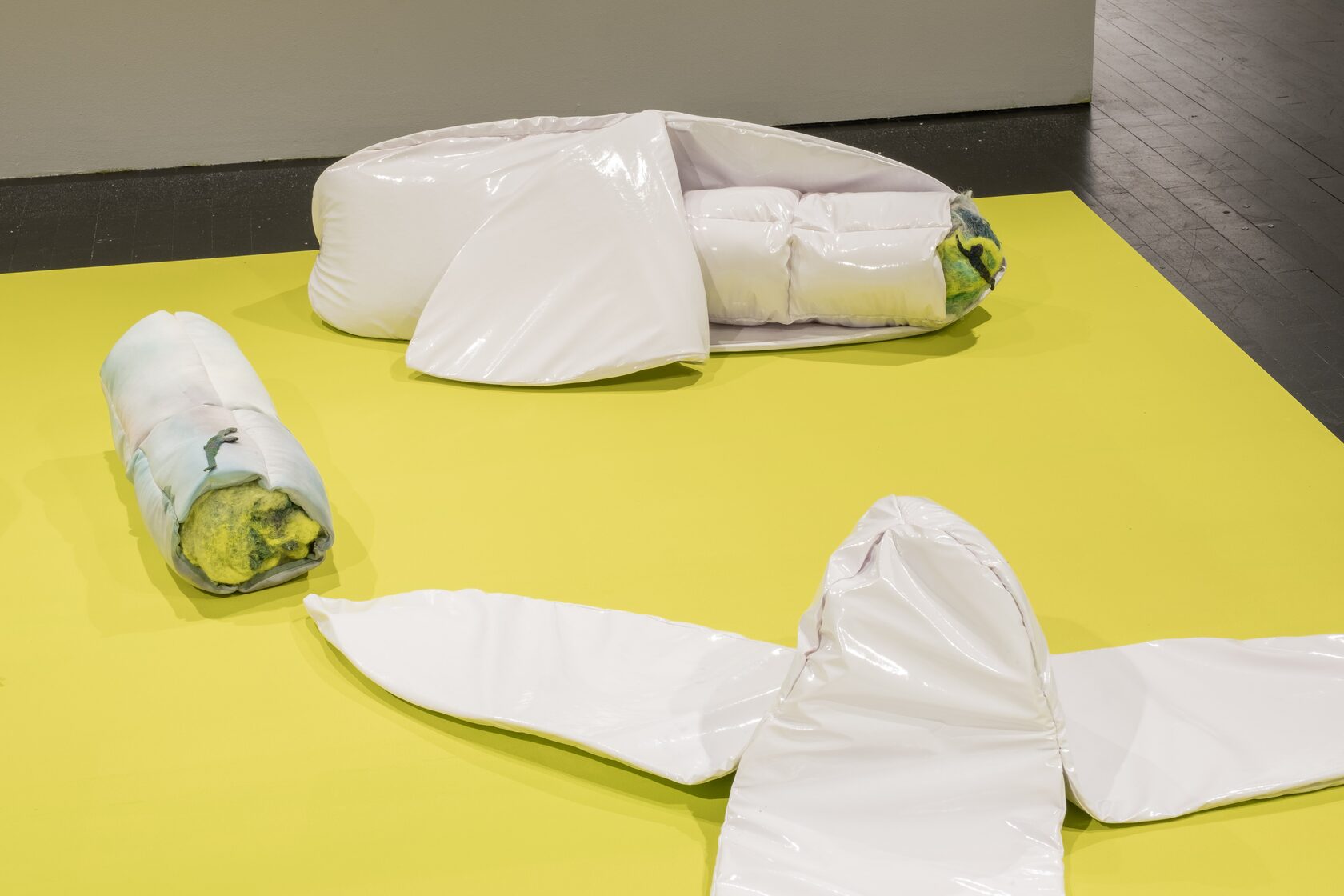
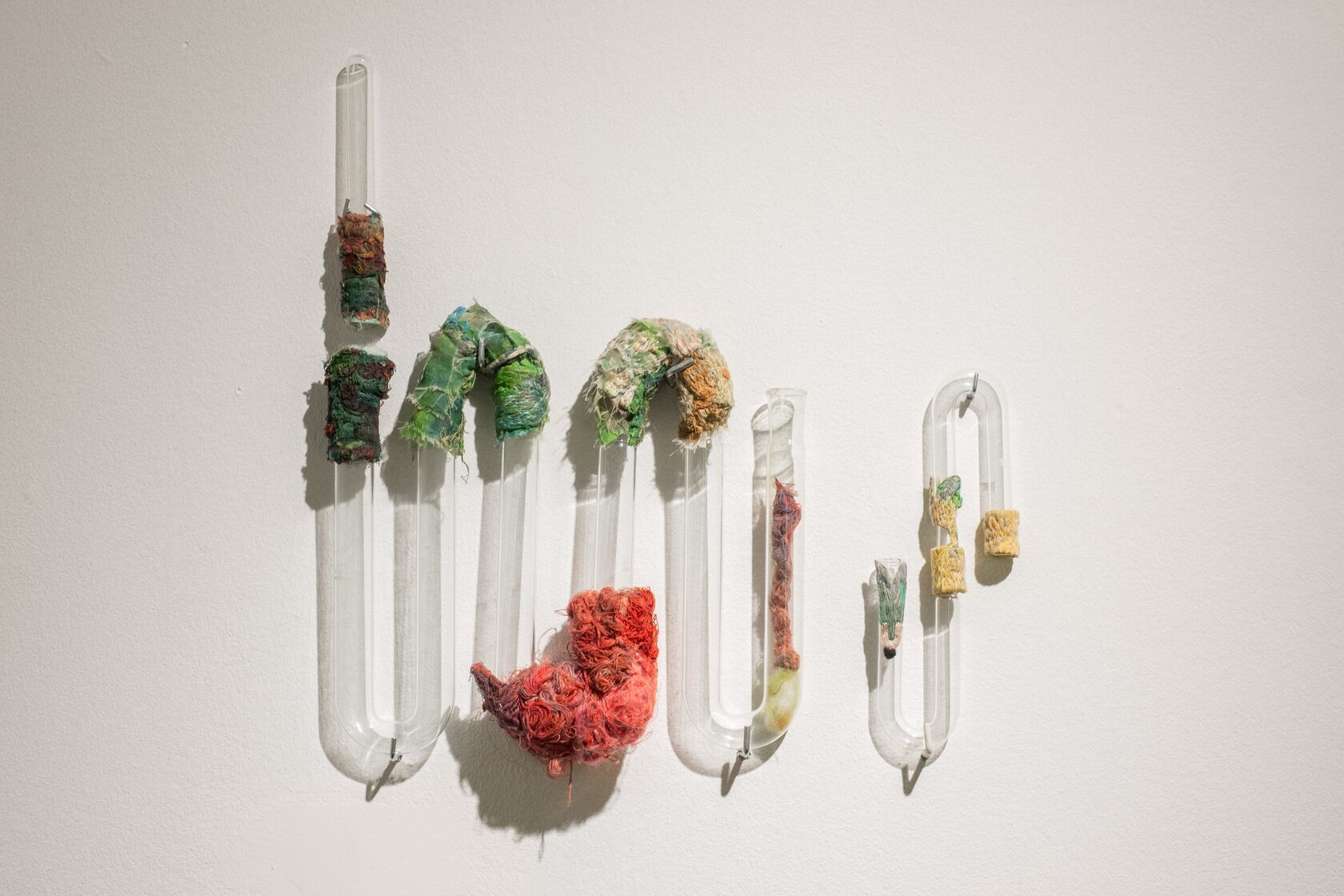
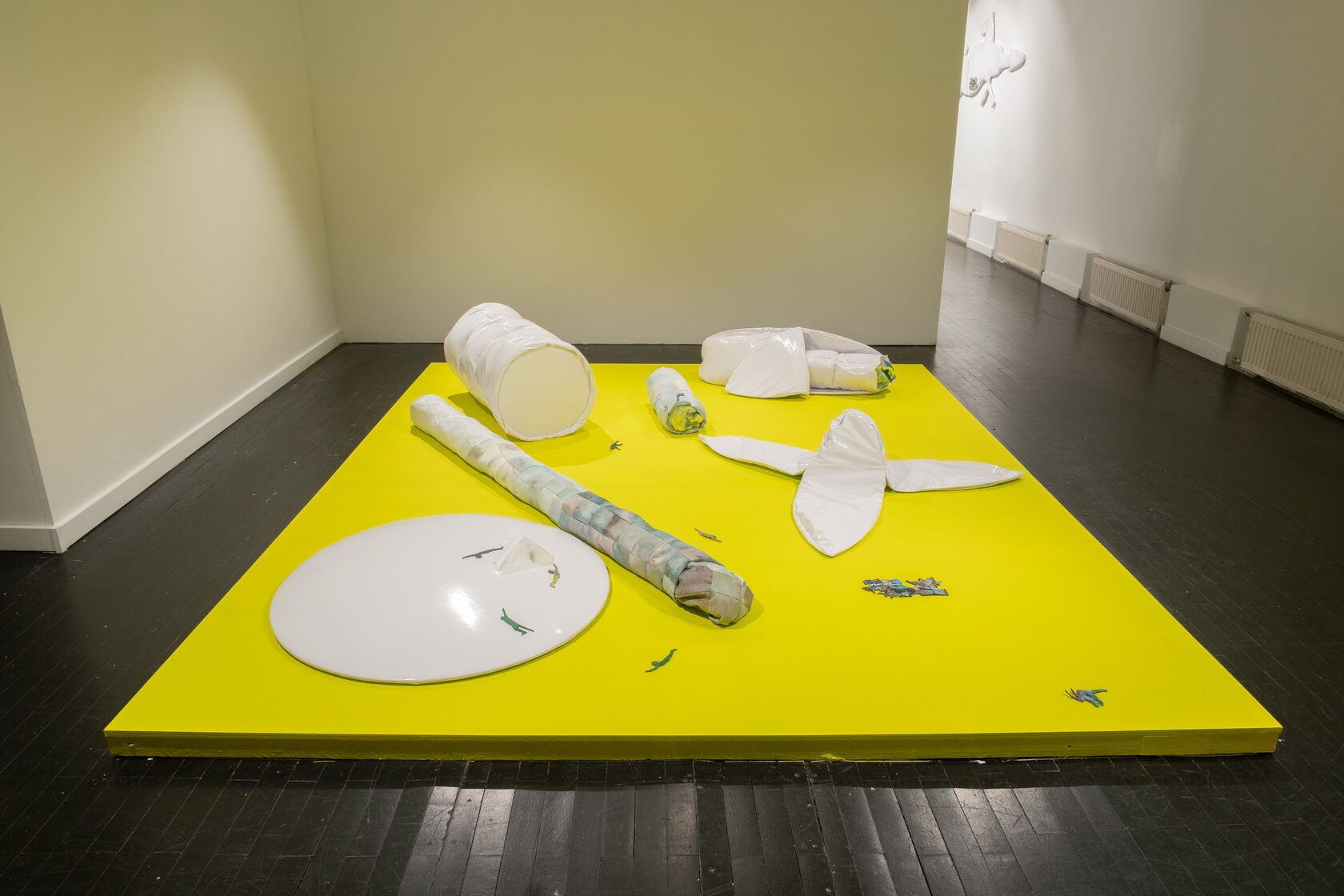





















WARDROBE
solo show at Triumph gallery, Moscow
curated by Marina Bobyleva
2024
curated by Marina Bobyleva
2024
The Kazan-based artist Zukhra Salakhova frequently turns to mythology in her creative practiсe and develops an original symbolic vocabulary. Her works rethink the conventional meanings of ornaments and patterns. The artist reads them as a narrative, deconstructs it into component images and reassembles them in new configurations. Zukhra’s medium of choice is textiles and embroidery, which she uses to make both highly time-consuming miniature artworks and large-scale installations — that both operate in a shared metaphorical, multi-tiered narrative.
Salakhova’s main material at the exhibition Wardrobe is textiles too. Fabrics come to serve as the connective link between different stories and images depicted in the artist’s works. Wardrobe is mostly understood to refer to
the entirety of one’s clothes, but it can be understood also as a temporary shell that the person tries on. Fabric thus becomes a universal matter that can take any shape or form — animate and inanimate, whole and fragmented, concrete and ambiguous. The artist employs it to convey the idea of transformation as a constant process
that affects literally everything.
Also called ‘metamorphosis’, this term can have varying meanings. In biology, for instance, it denotes the life stages of a living organism. Another interpretation confines it to an exclusively internal process. In the eponymous poem, Ovid describes change through a transformation of being and identity where the interrelation of the person
and nature is reaffirmed through mythology, mental and physical changes of form. The magical metamorphoses
in Ovid’s poem have acted as the starting point for this exhibition by Zukhra Salakhova. The descriptions by the Roman poet are not taken as fiction divorced from reality but as an illustration of real-life transformations, where nothing that exists goes away but changes into something else, transmutes. According to the artist, this perspective on the world challenges the anthropocentric view, reminds us of the connectedness of all creatures and objects,
and allows for some room for the magical and the incredible.
Each exhibition hall tells a separate story: Anthill, a textile installation, appears like a kaleidoscope with starkly bright bits, numerous details, and characters and situations flowing into each other. The next hall features figures
of running horses, wherein one can discern small silhouettes of moving people. They show emergence of one form from another as a rapid and unrelenting process. Yet another hall contains objects that seem abstract and encapsulate the throbbing of live. The stories narrated by Zukhra Salakhova are subtle and peculiar.
Her experiments with varied techniques and materials enable the artists to amalgamate many voices into a concurrent chorus, where each sound is distinct without discord.
Marina Bobyleva
Salakhova’s main material at the exhibition Wardrobe is textiles too. Fabrics come to serve as the connective link between different stories and images depicted in the artist’s works. Wardrobe is mostly understood to refer to
the entirety of one’s clothes, but it can be understood also as a temporary shell that the person tries on. Fabric thus becomes a universal matter that can take any shape or form — animate and inanimate, whole and fragmented, concrete and ambiguous. The artist employs it to convey the idea of transformation as a constant process
that affects literally everything.
Also called ‘metamorphosis’, this term can have varying meanings. In biology, for instance, it denotes the life stages of a living organism. Another interpretation confines it to an exclusively internal process. In the eponymous poem, Ovid describes change through a transformation of being and identity where the interrelation of the person
and nature is reaffirmed through mythology, mental and physical changes of form. The magical metamorphoses
in Ovid’s poem have acted as the starting point for this exhibition by Zukhra Salakhova. The descriptions by the Roman poet are not taken as fiction divorced from reality but as an illustration of real-life transformations, where nothing that exists goes away but changes into something else, transmutes. According to the artist, this perspective on the world challenges the anthropocentric view, reminds us of the connectedness of all creatures and objects,
and allows for some room for the magical and the incredible.
Each exhibition hall tells a separate story: Anthill, a textile installation, appears like a kaleidoscope with starkly bright bits, numerous details, and characters and situations flowing into each other. The next hall features figures
of running horses, wherein one can discern small silhouettes of moving people. They show emergence of one form from another as a rapid and unrelenting process. Yet another hall contains objects that seem abstract and encapsulate the throbbing of live. The stories narrated by Zukhra Salakhova are subtle and peculiar.
Her experiments with varied techniques and materials enable the artists to amalgamate many voices into a concurrent chorus, where each sound is distinct without discord.
Marina Bobyleva
